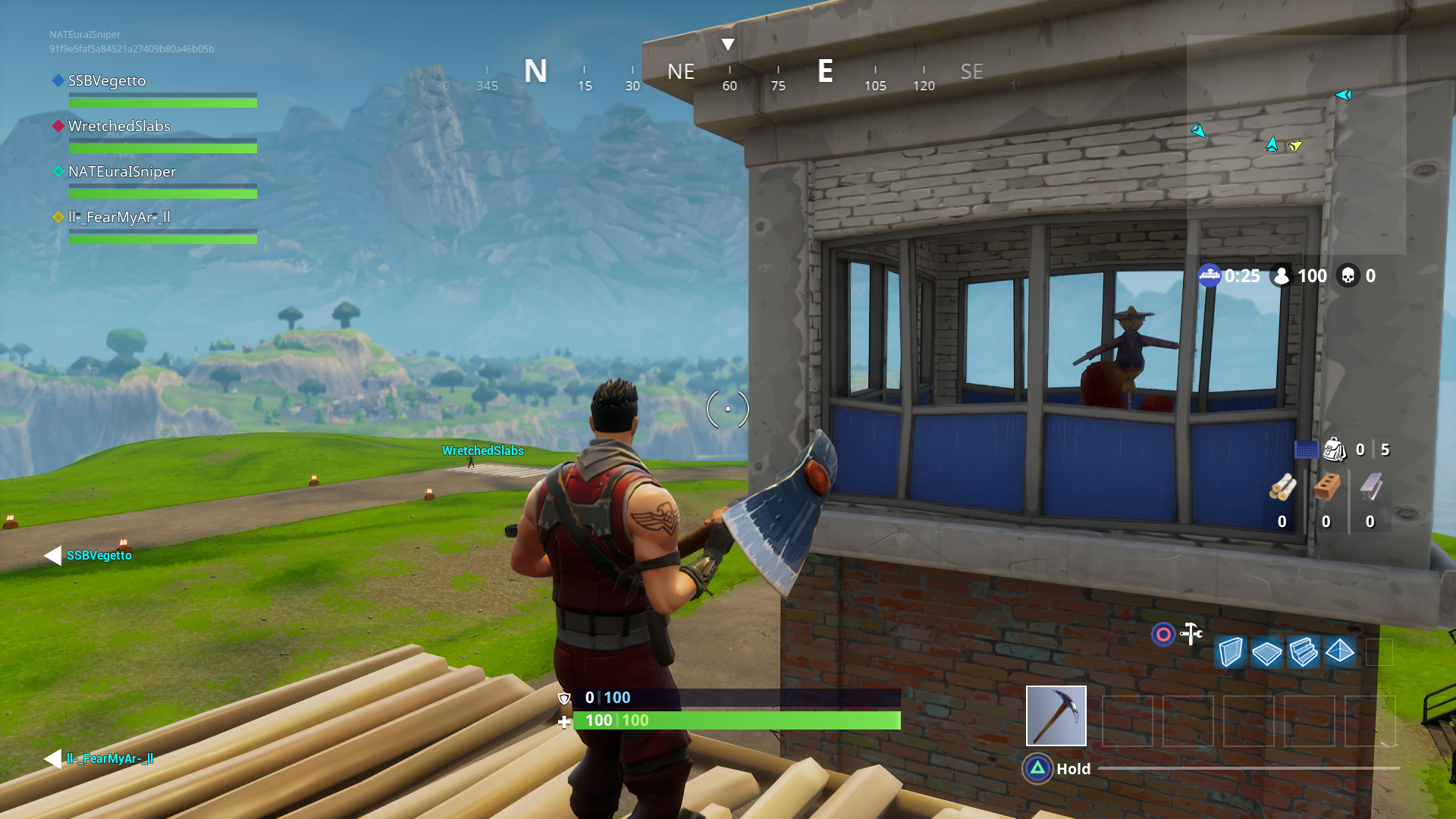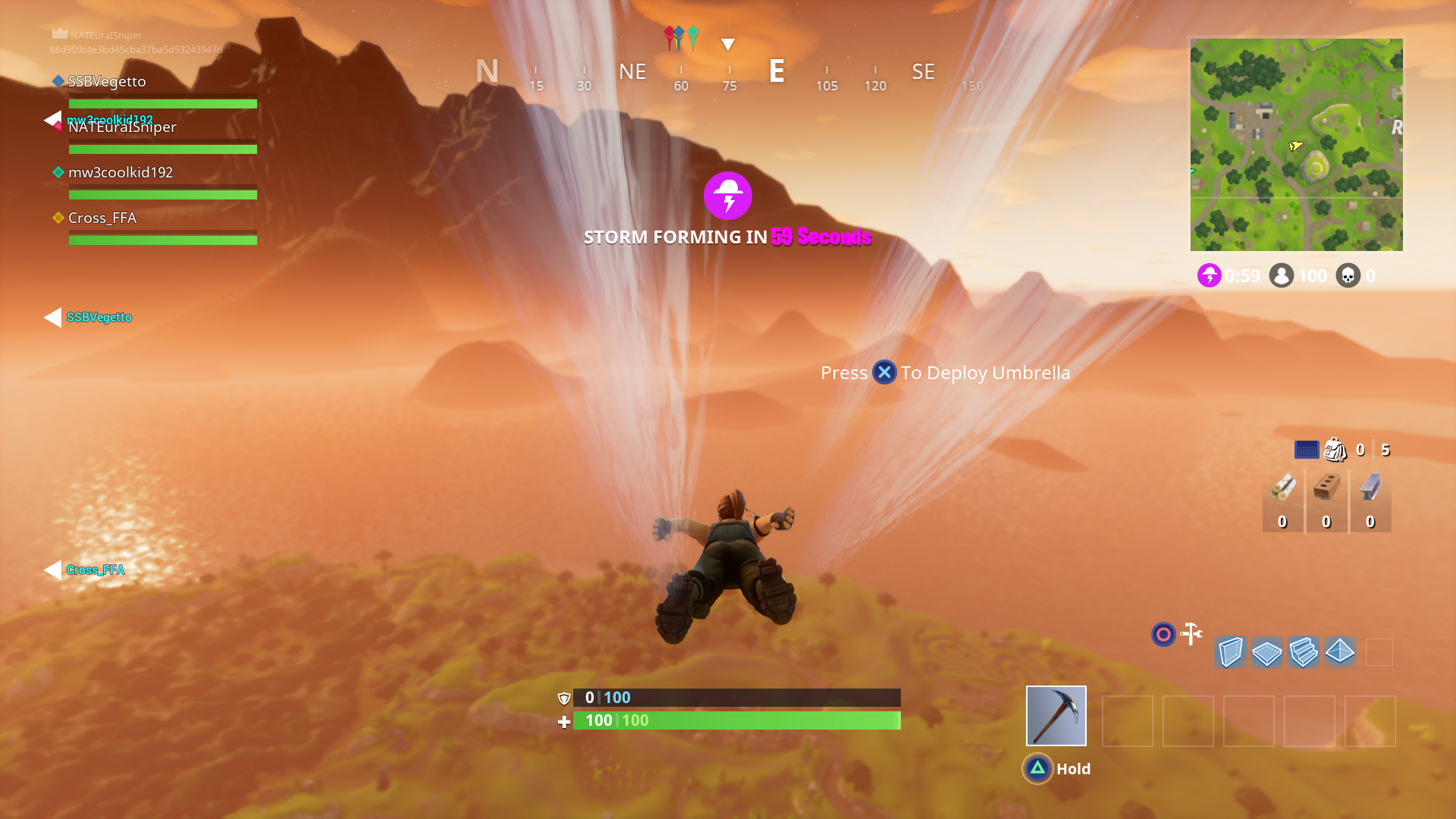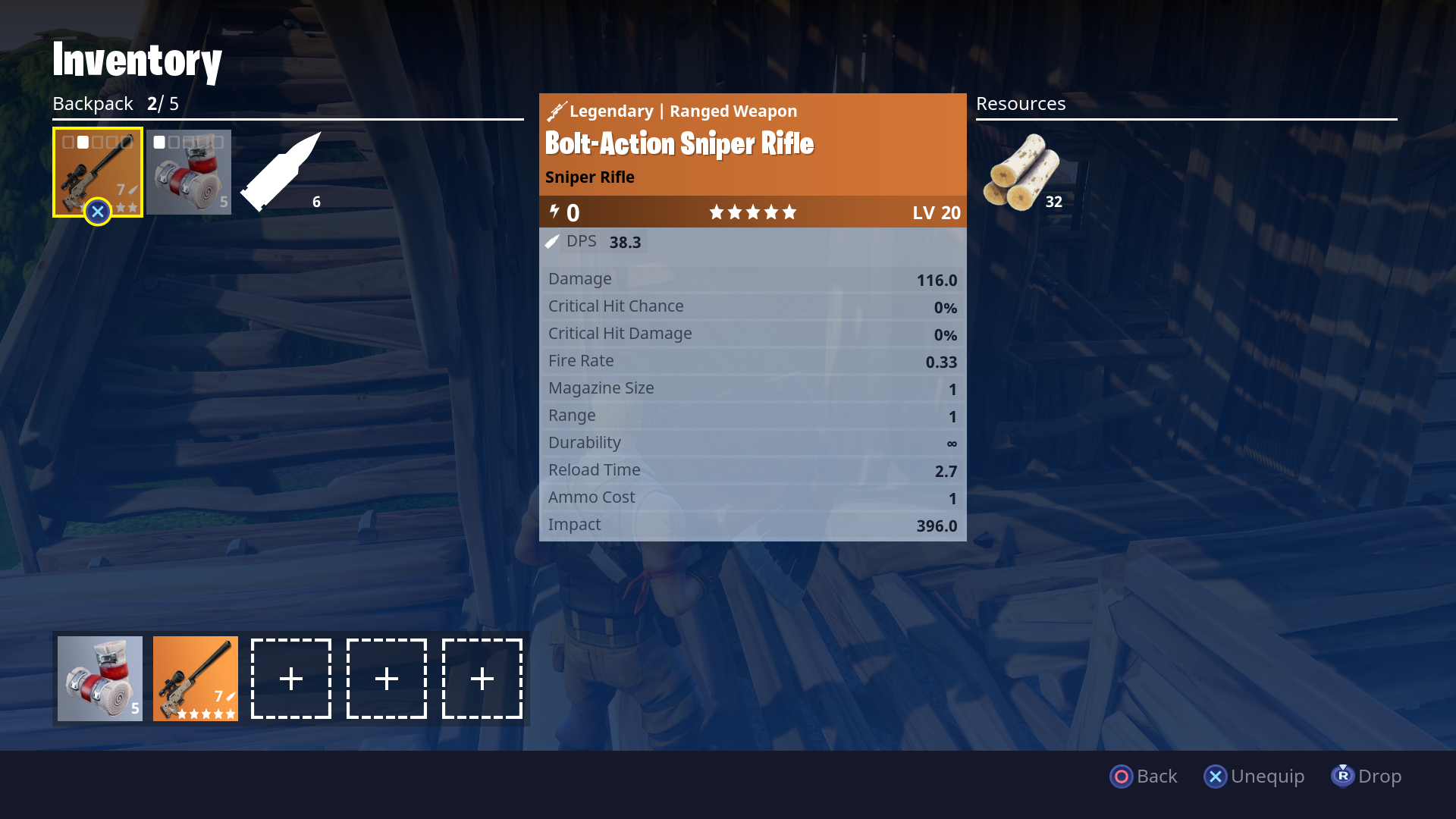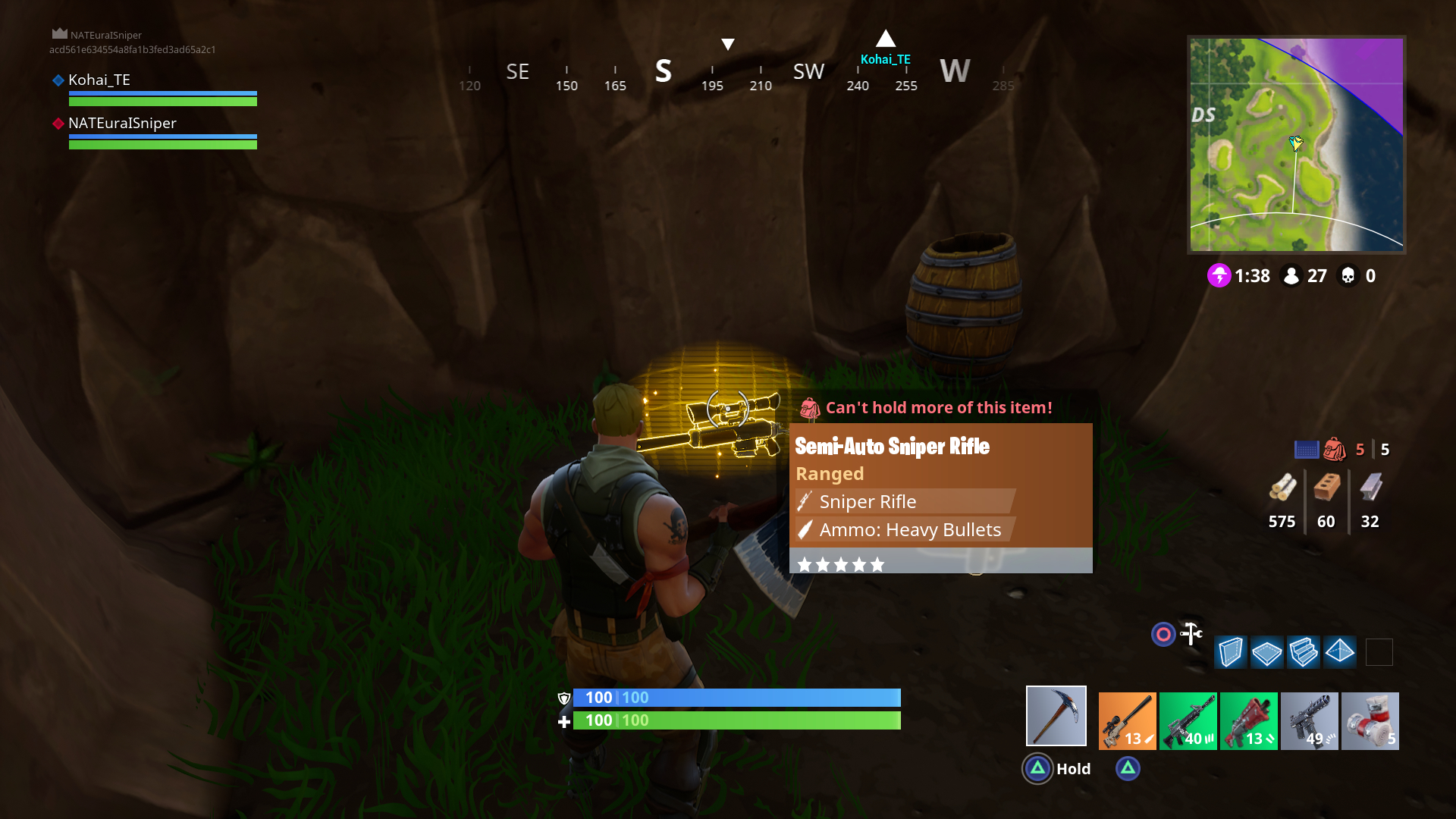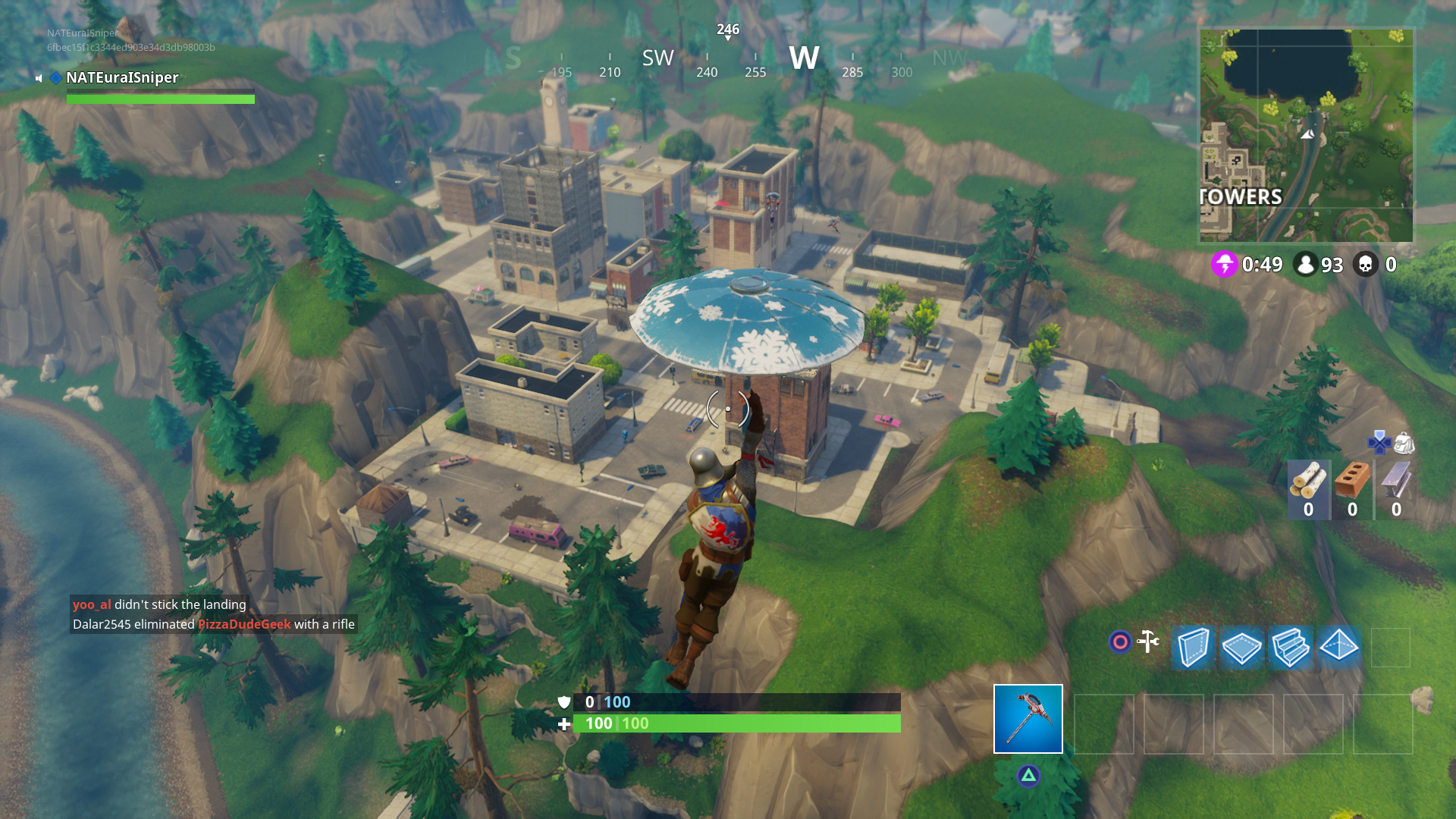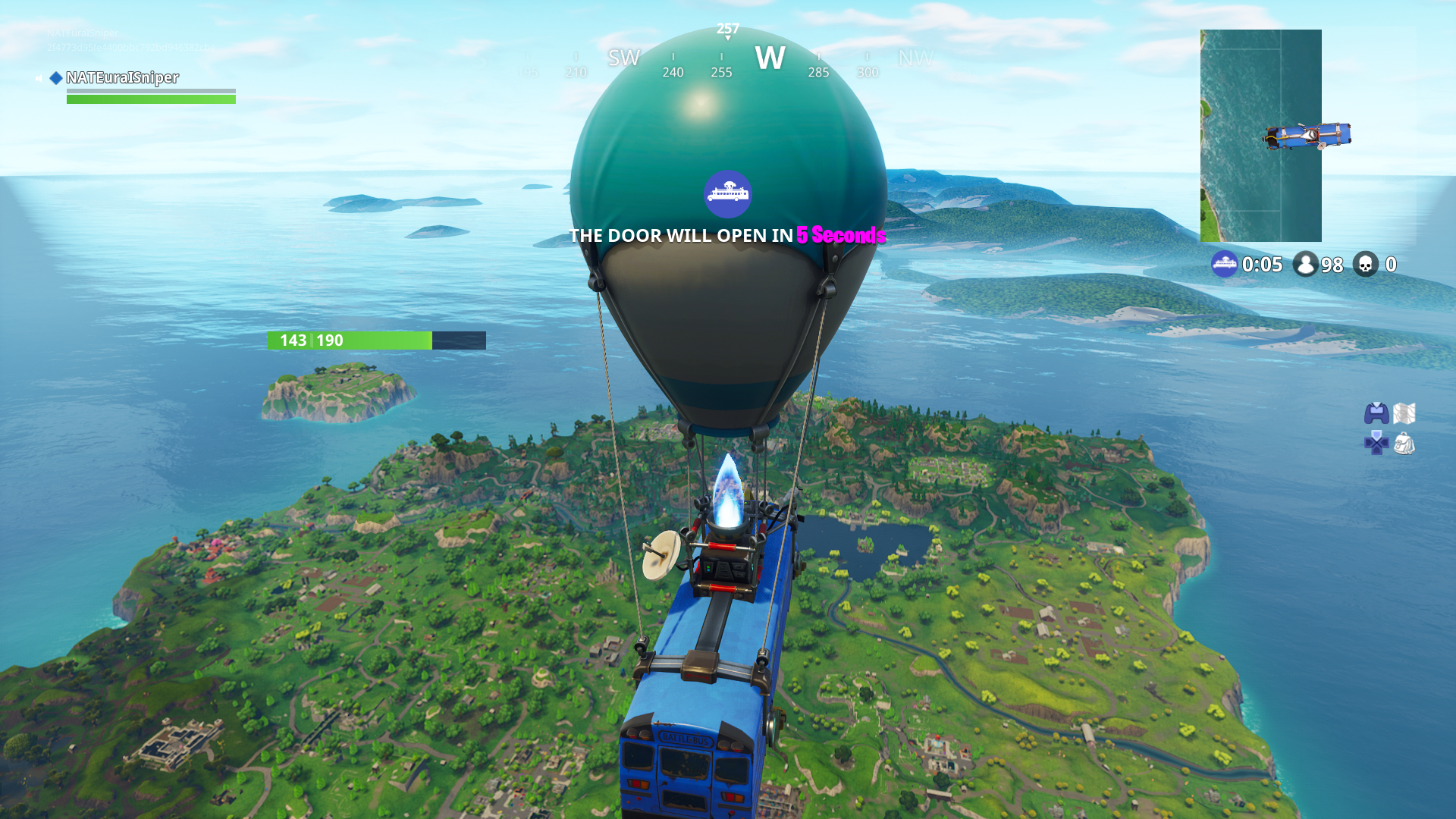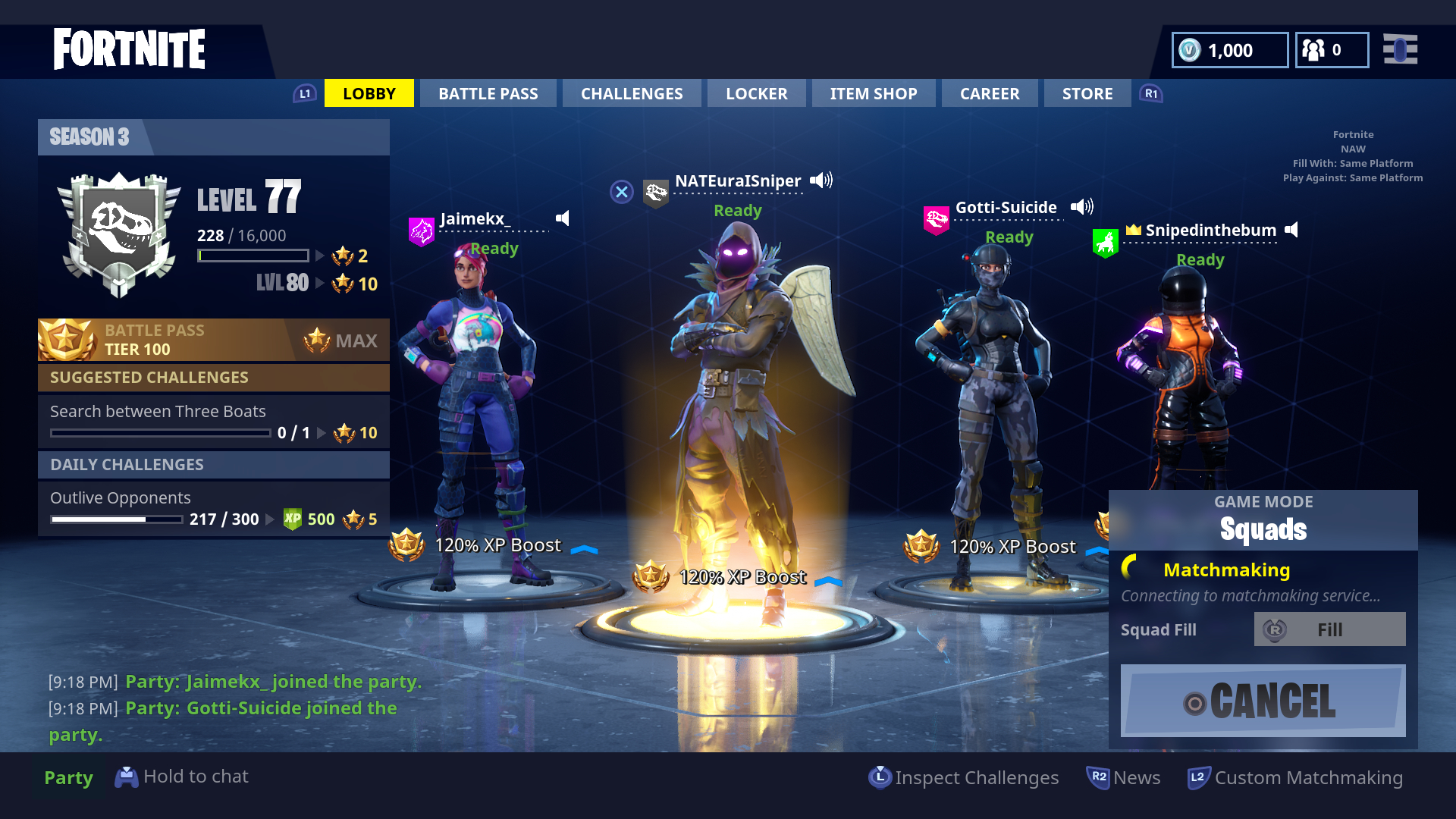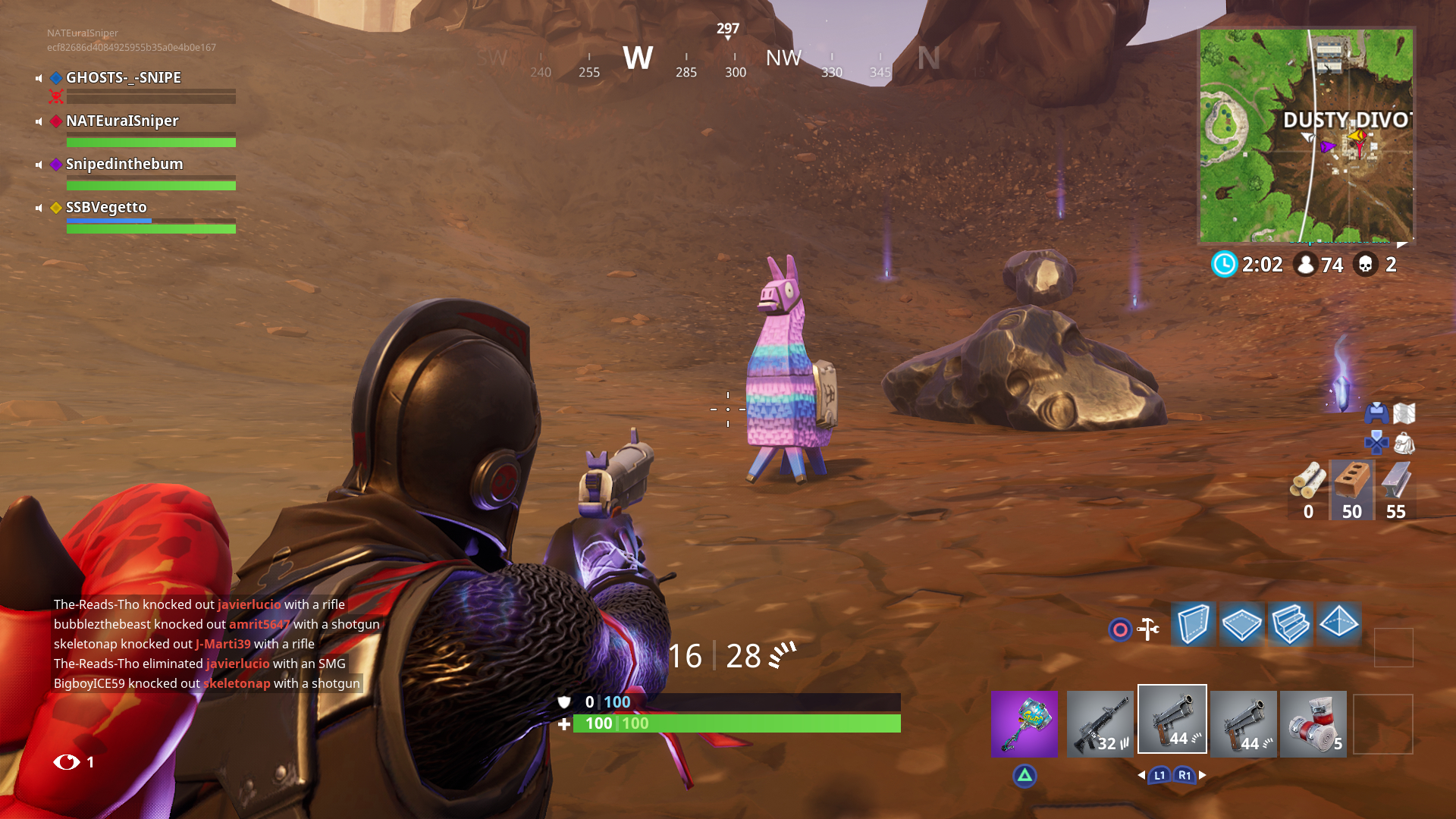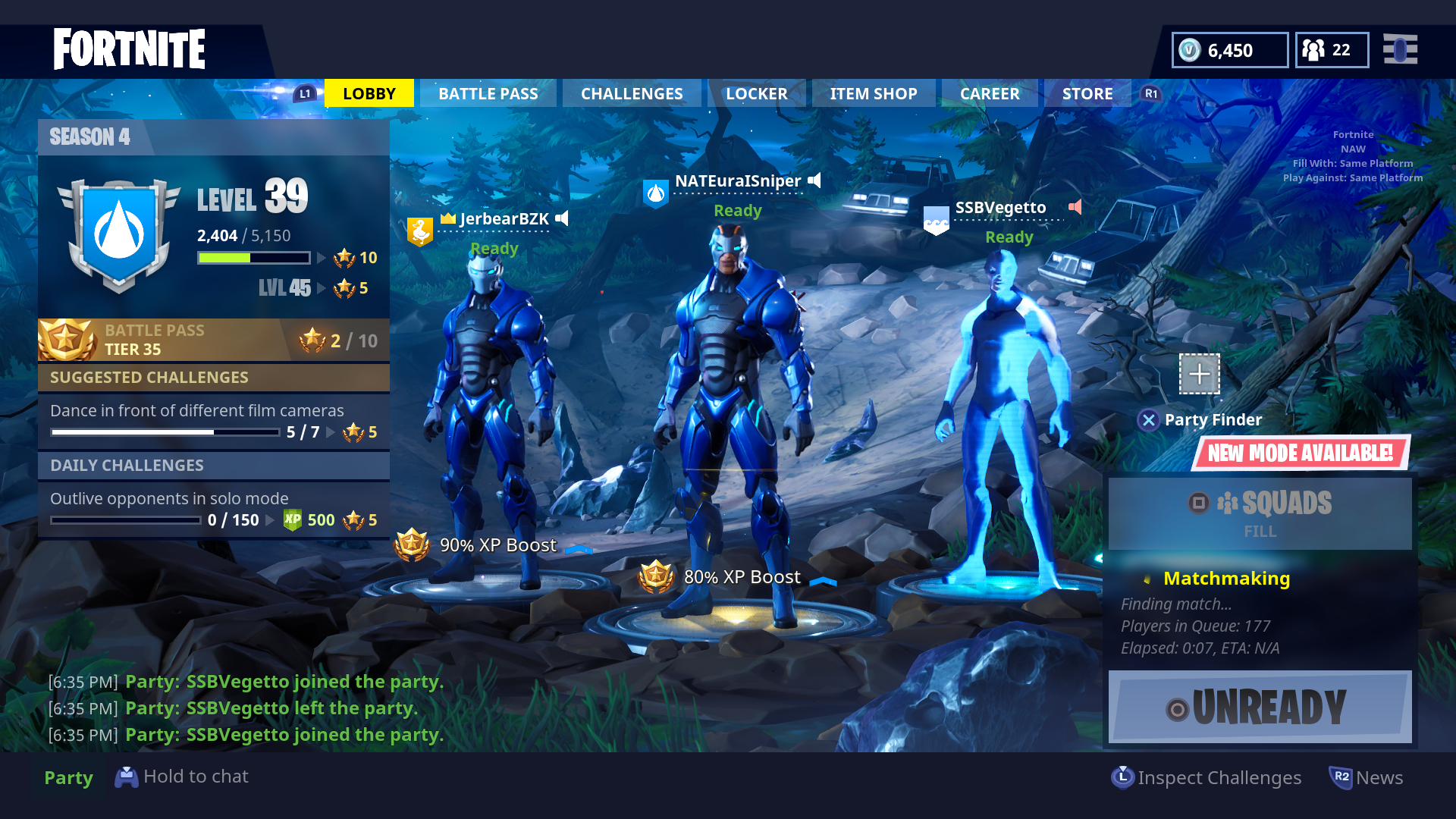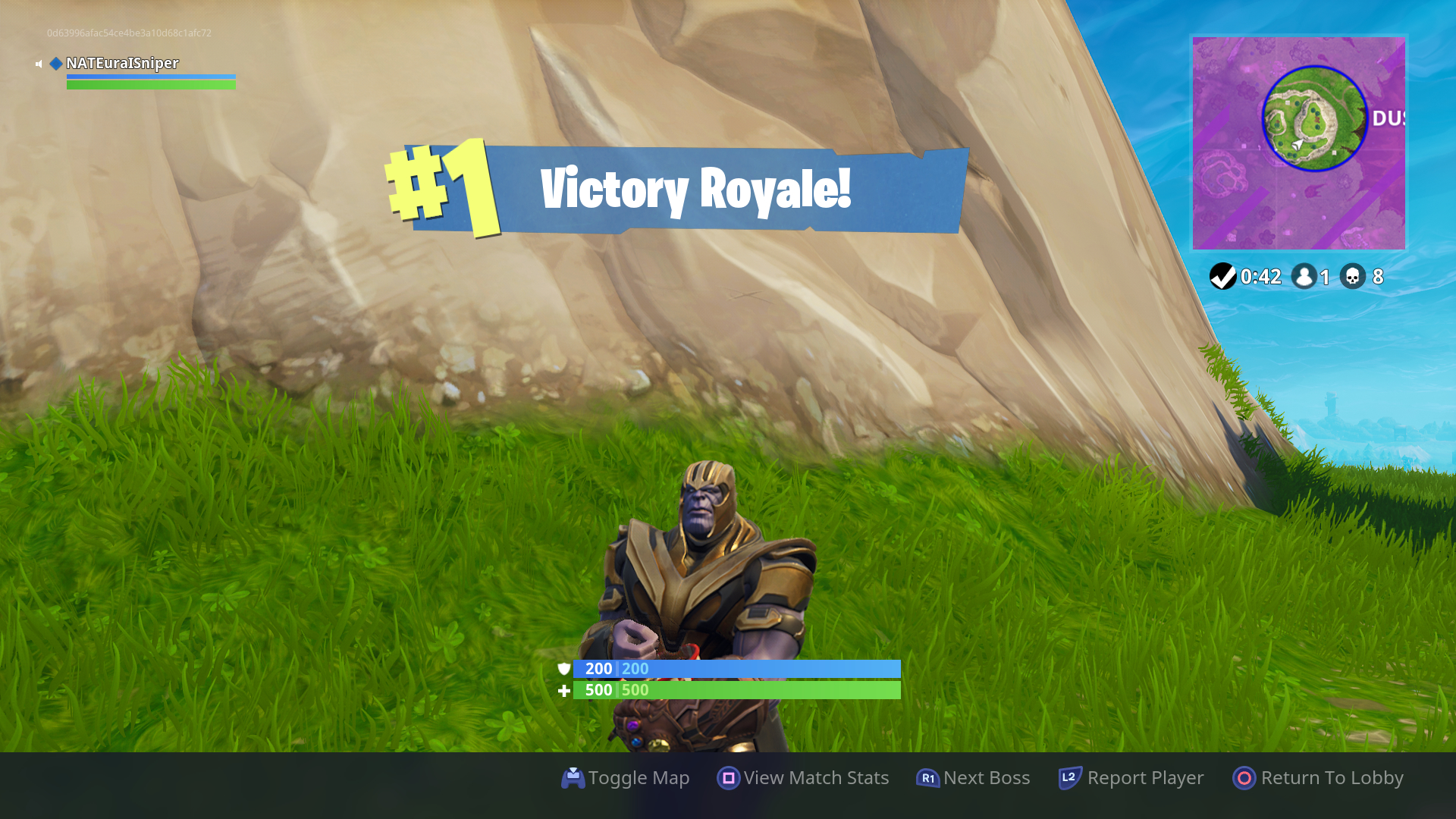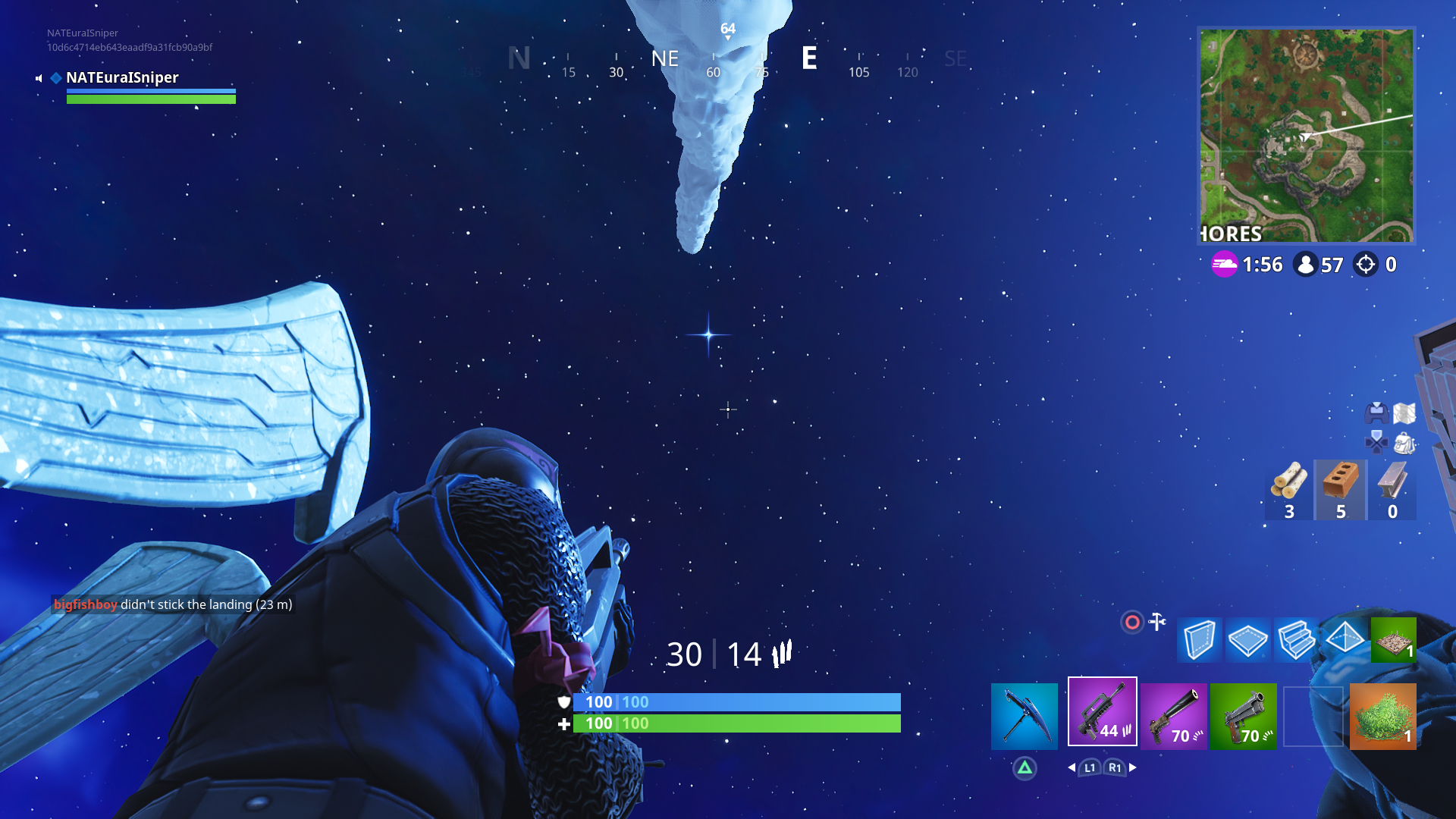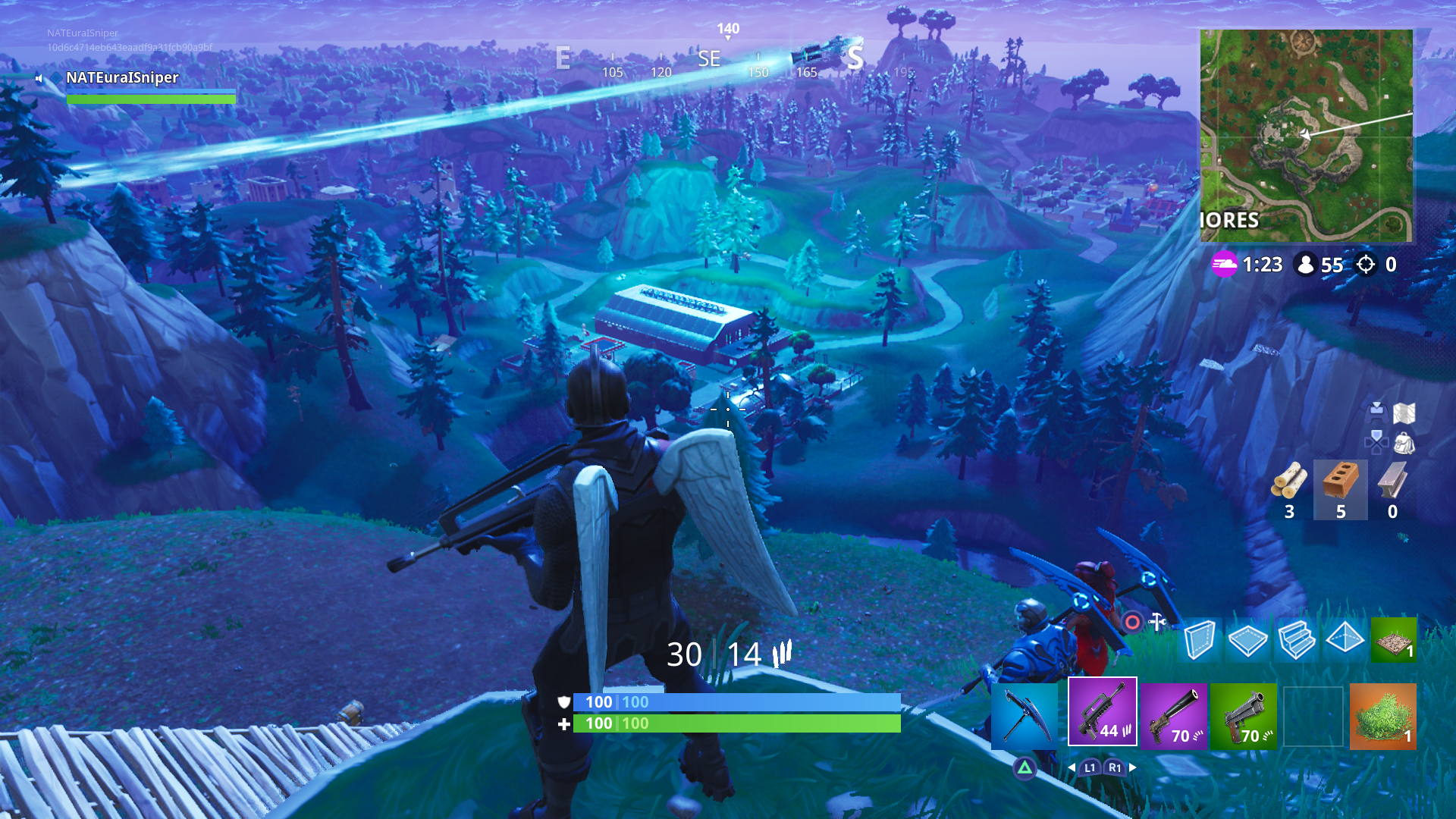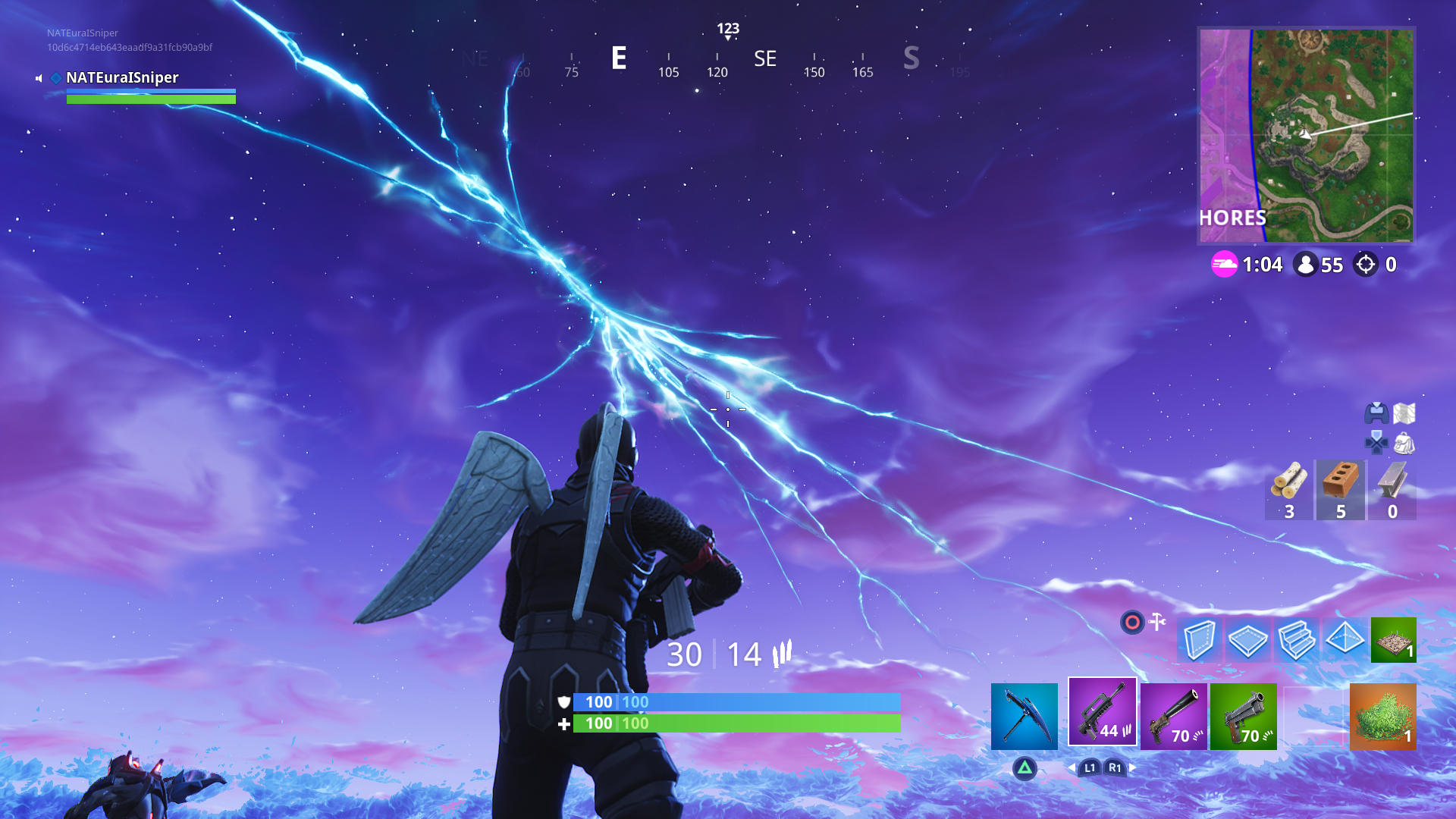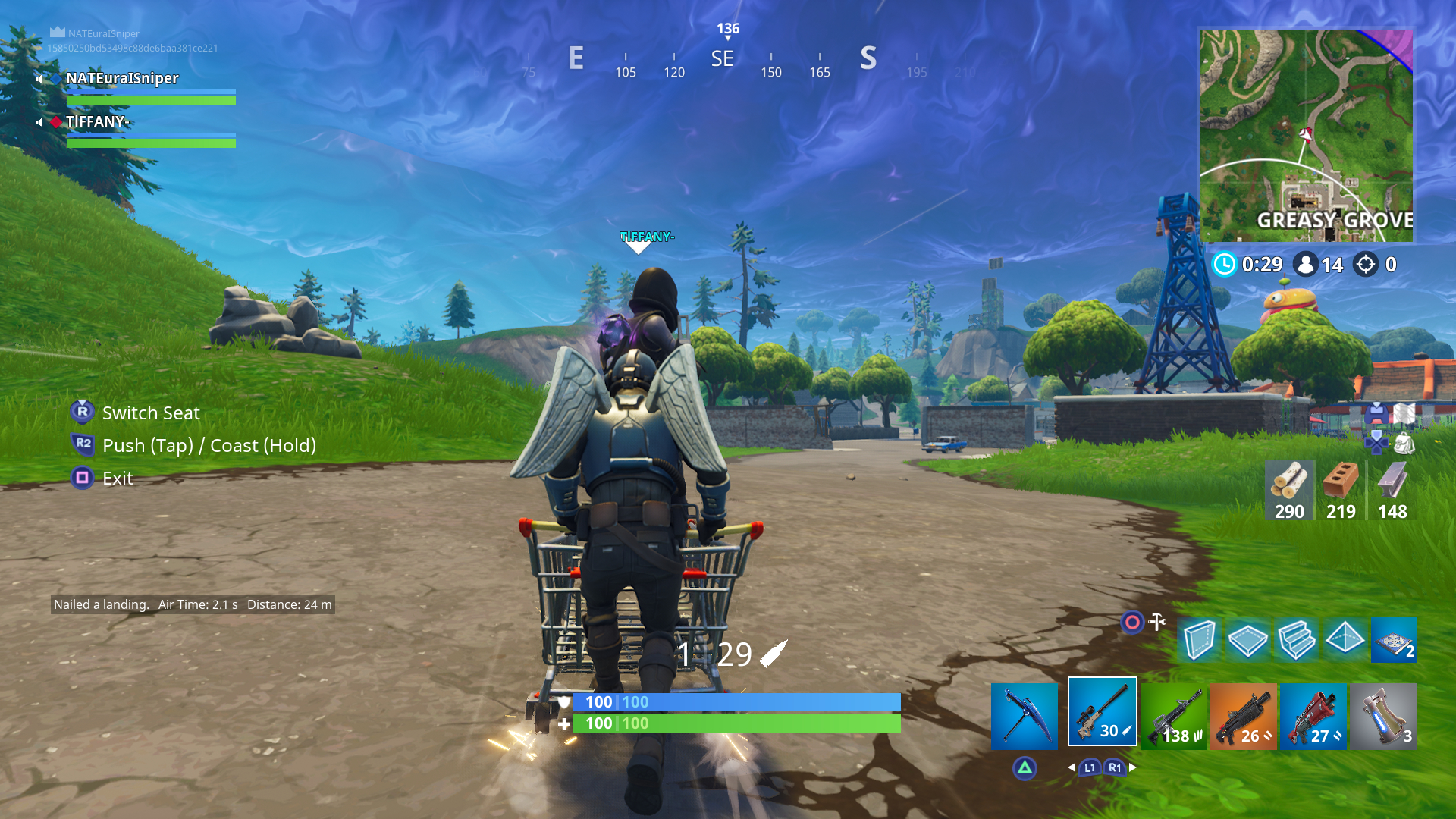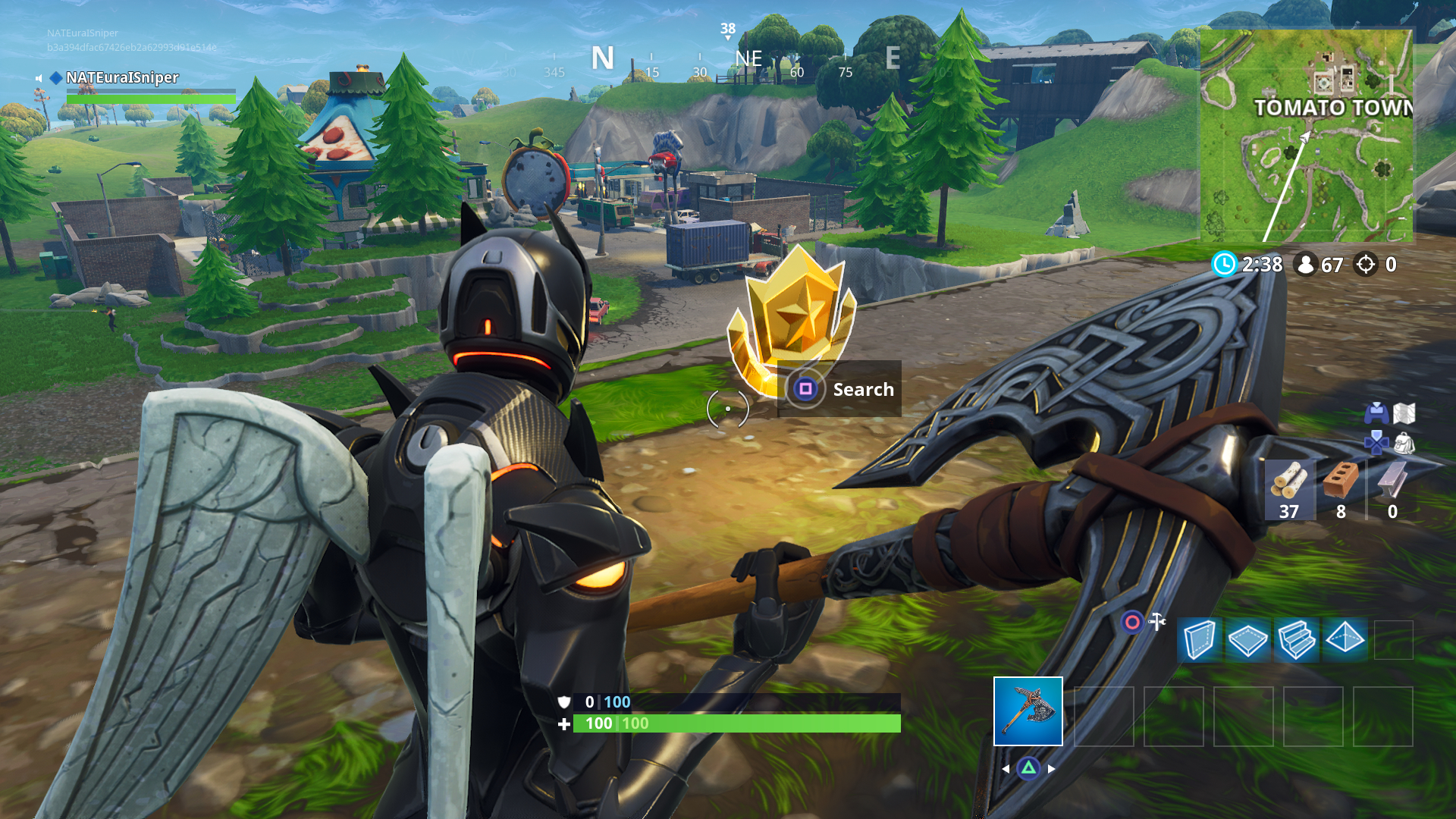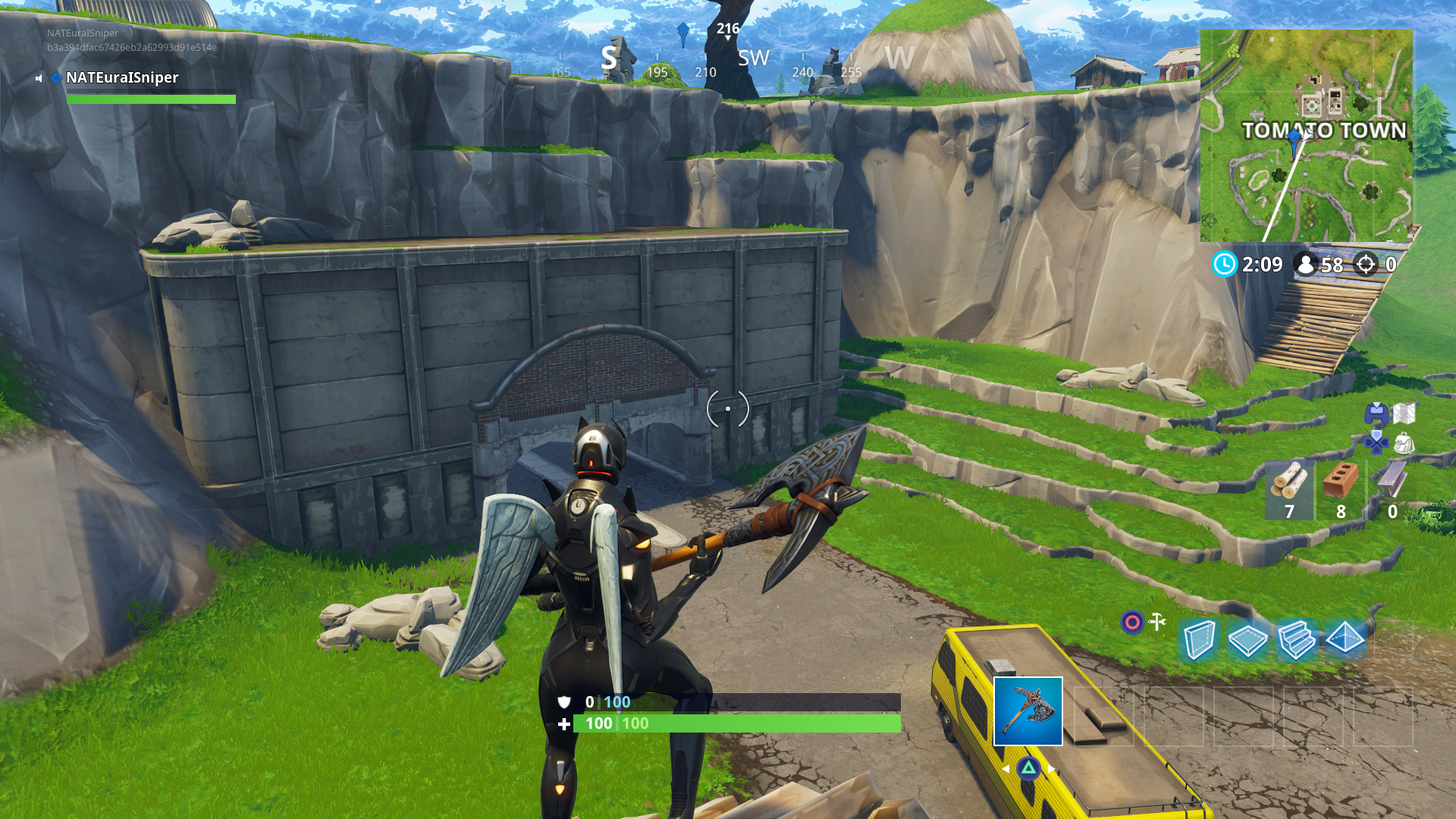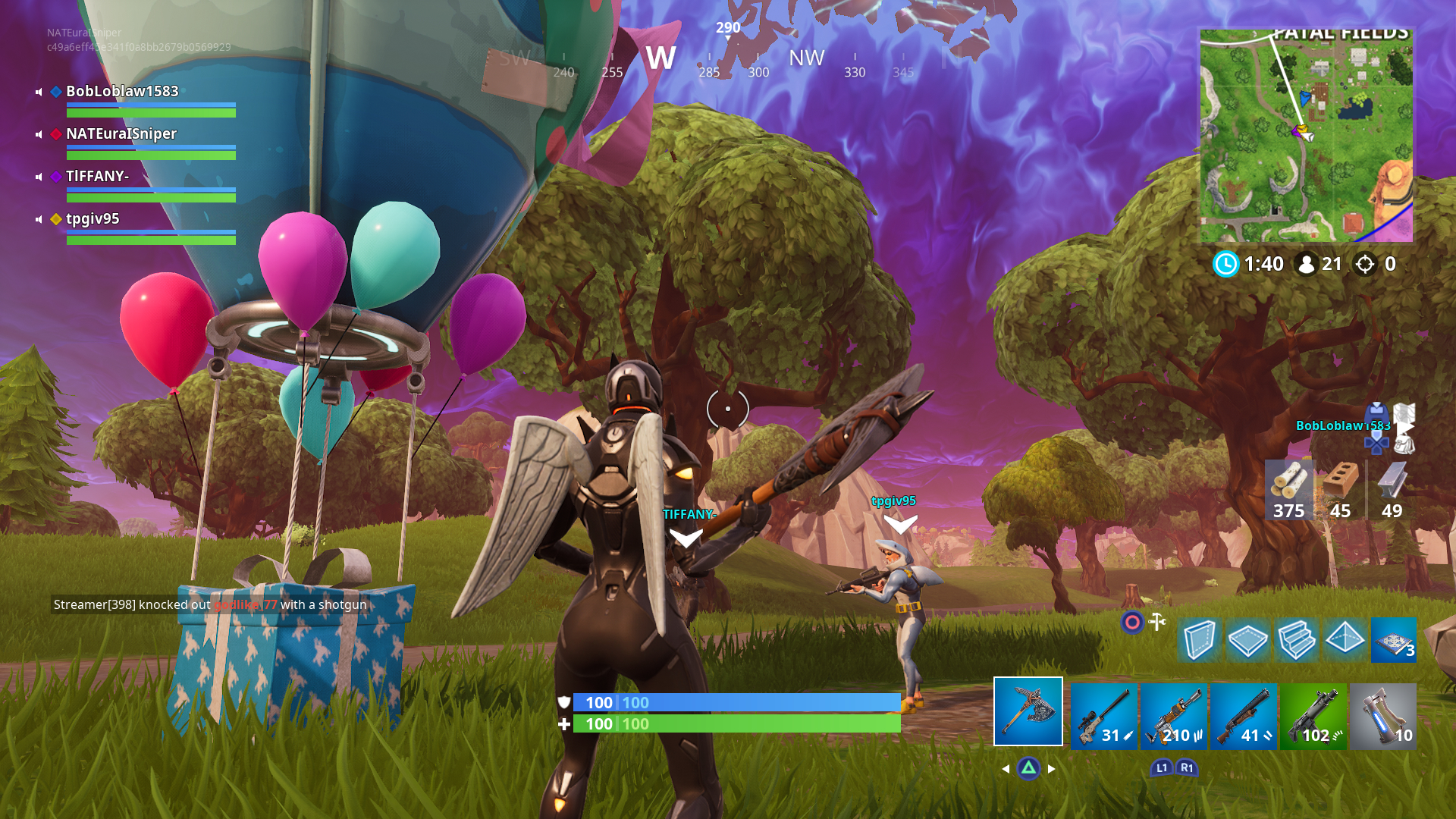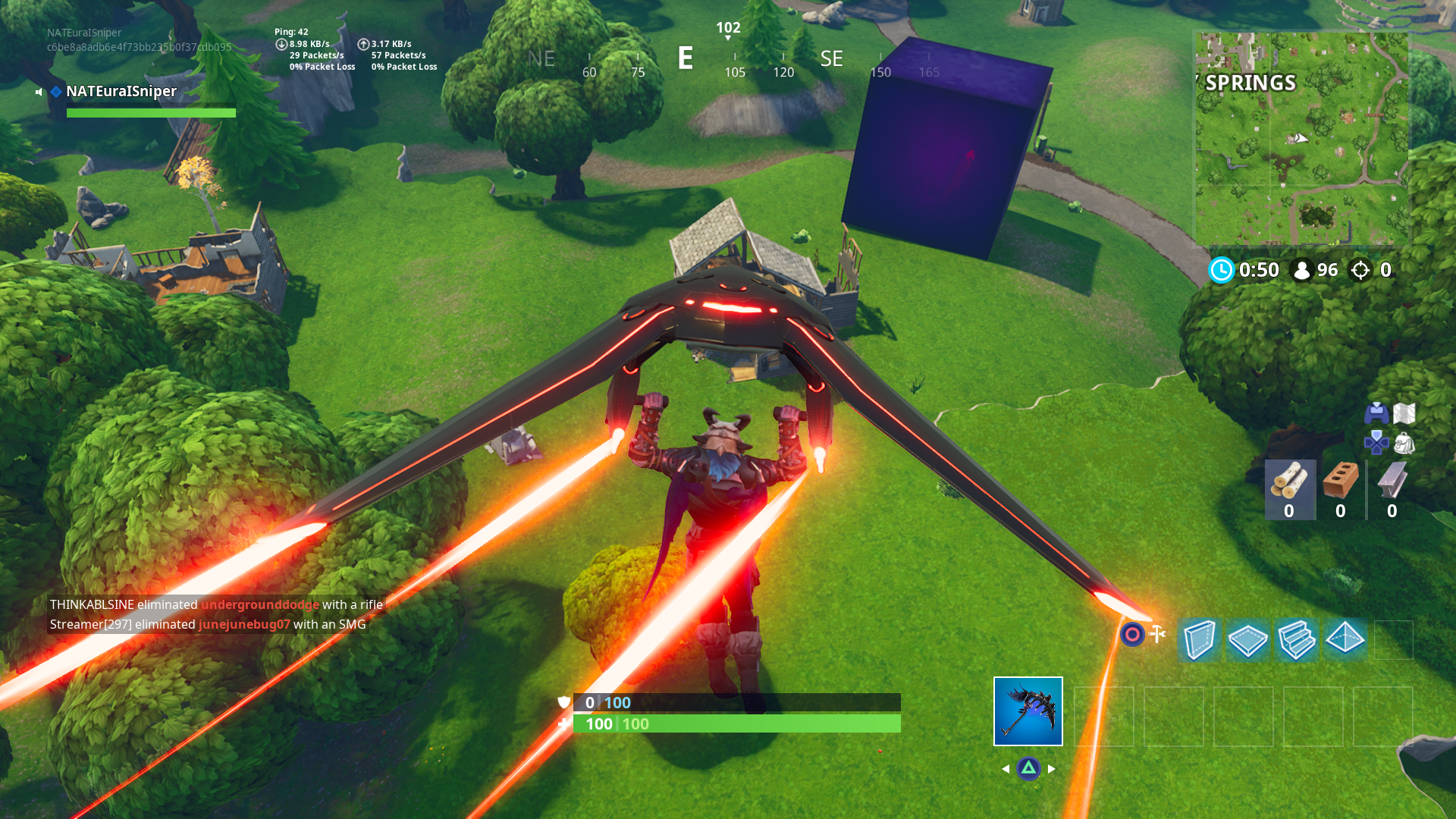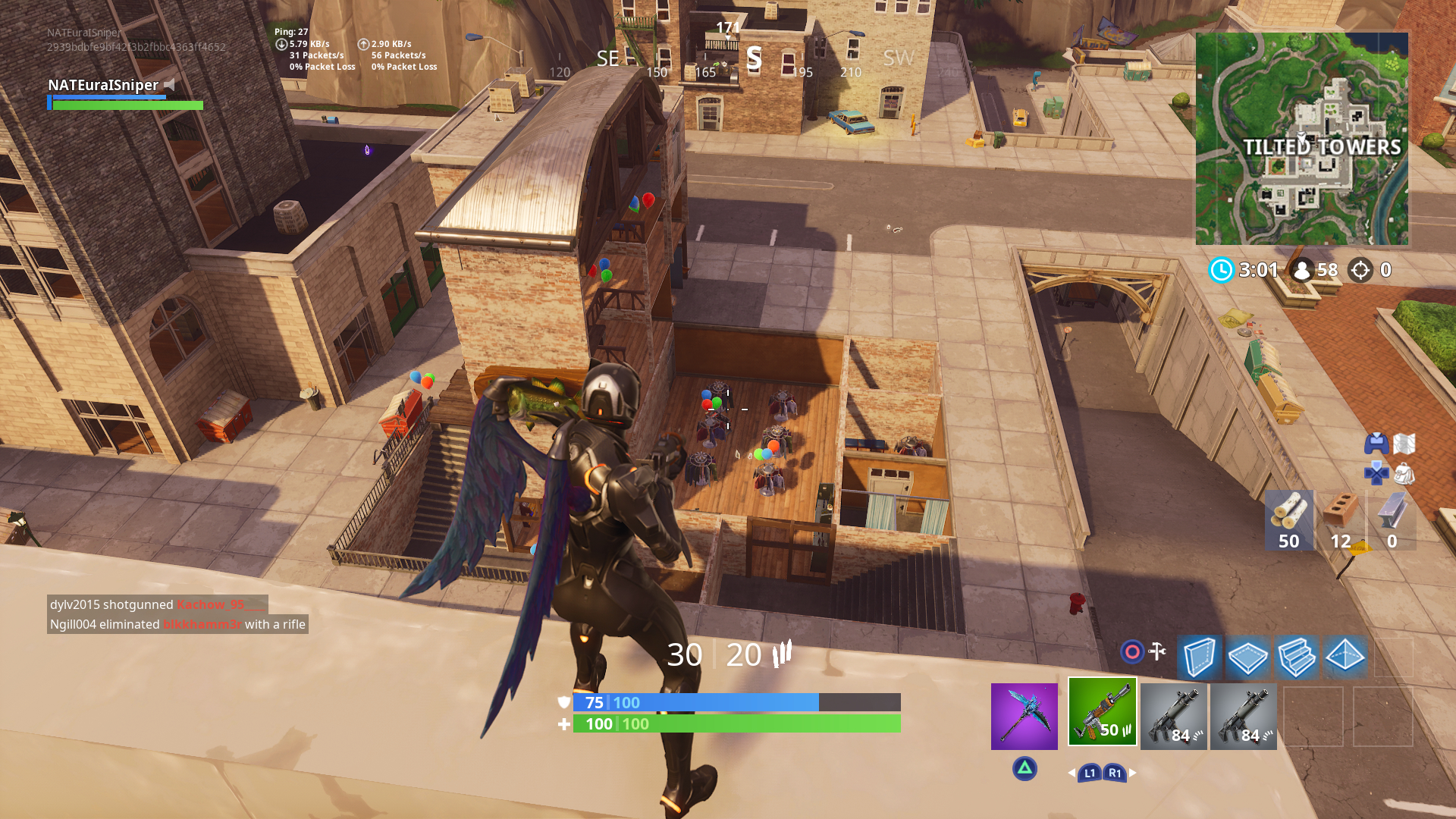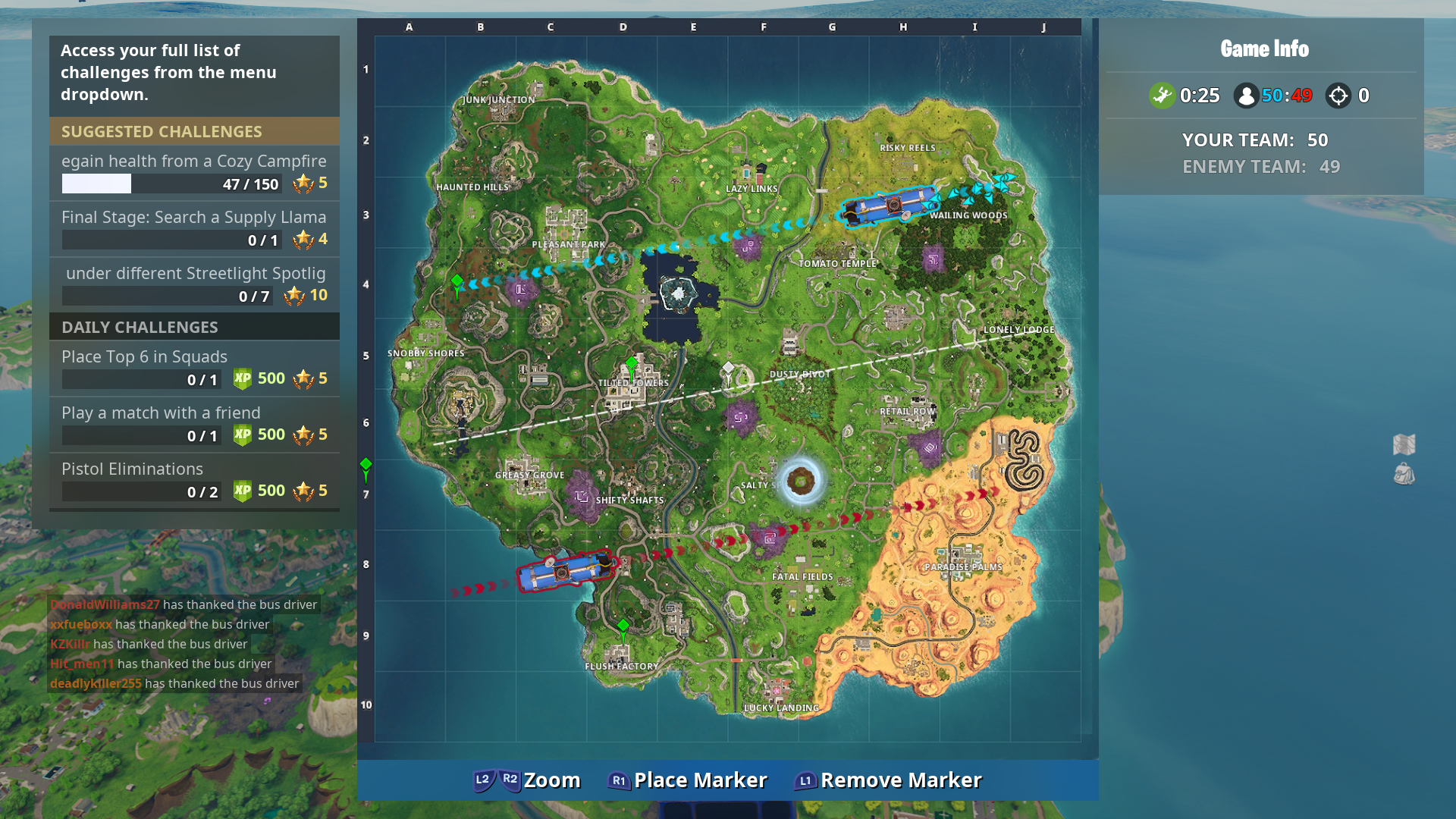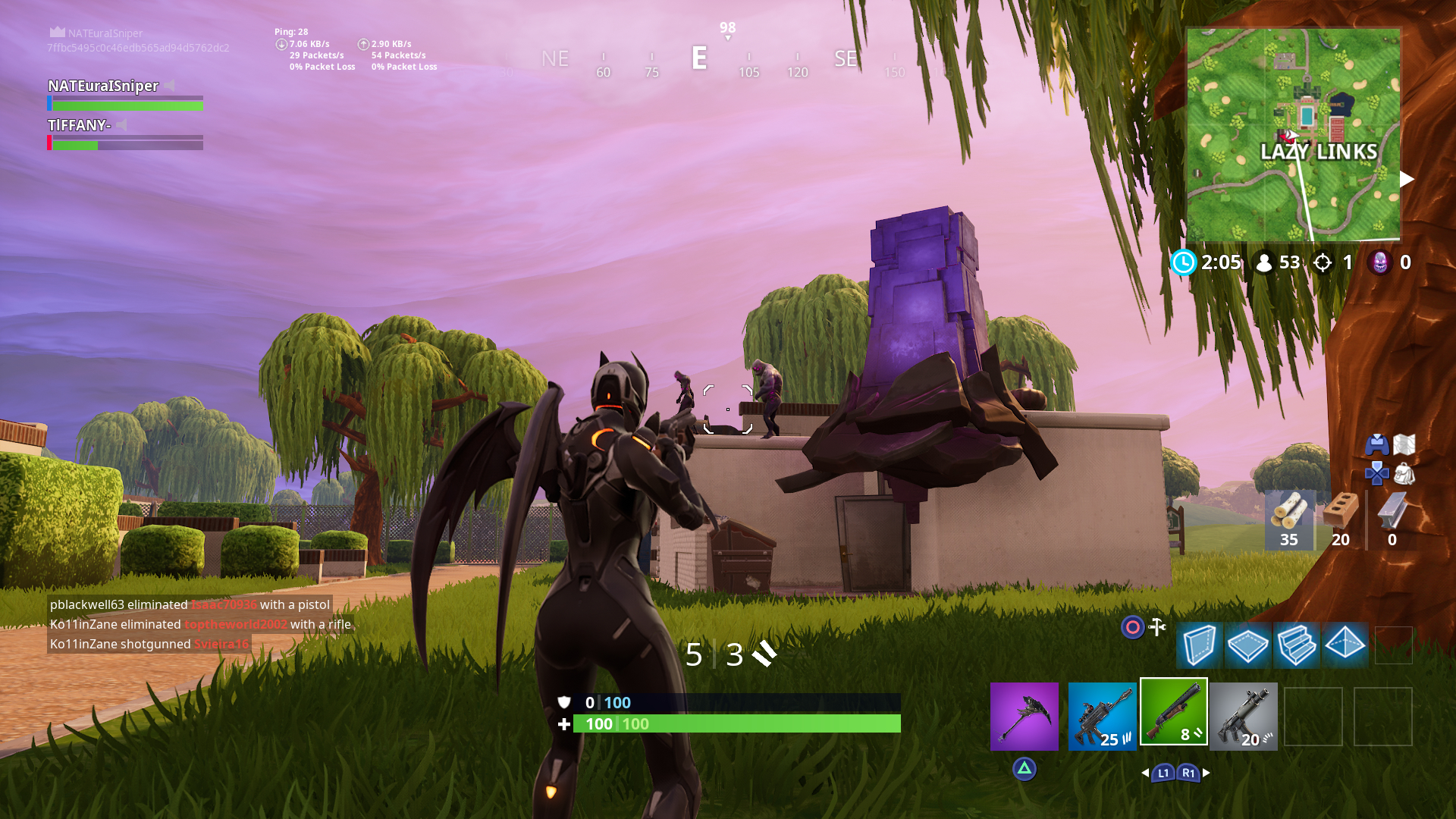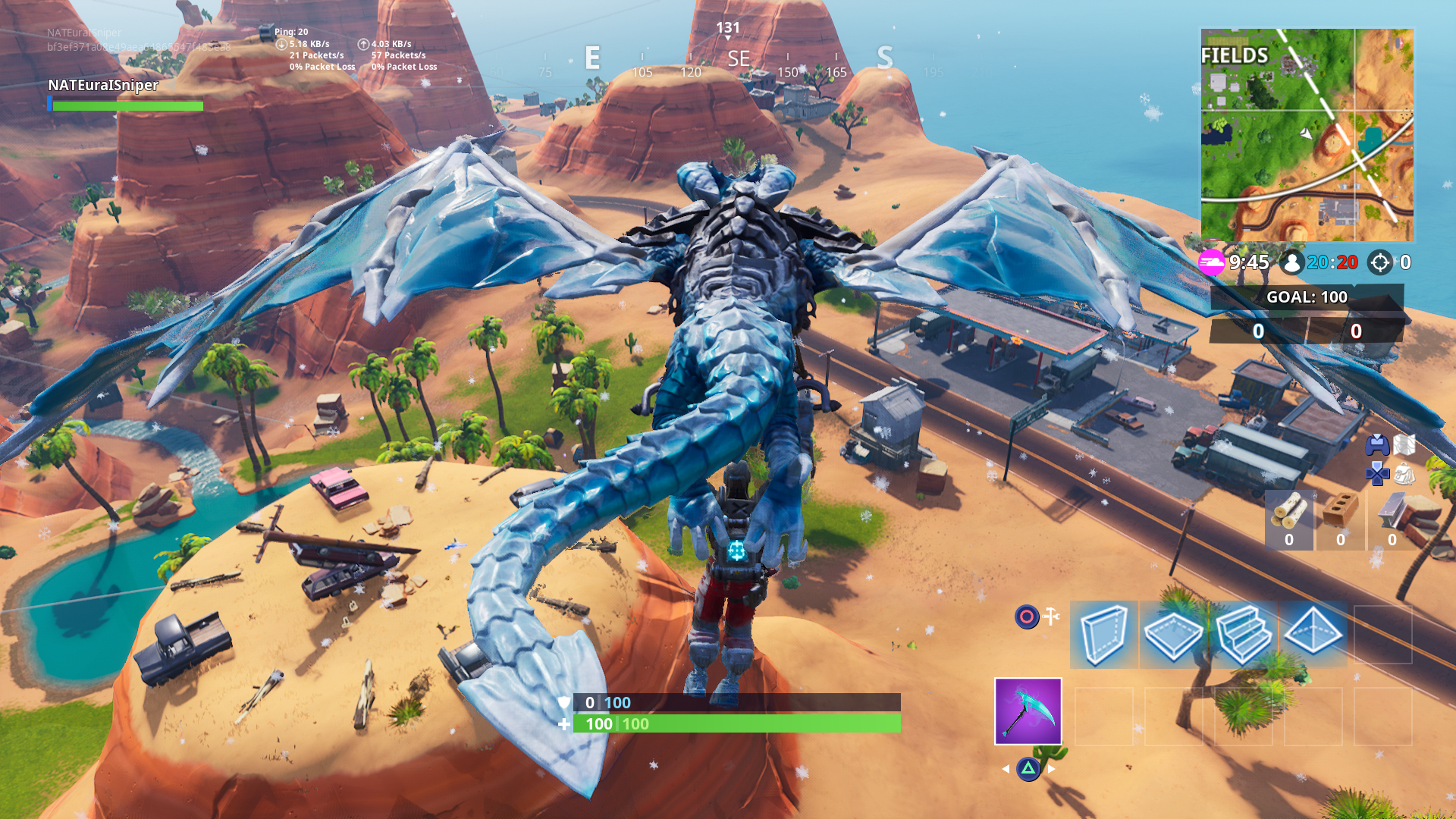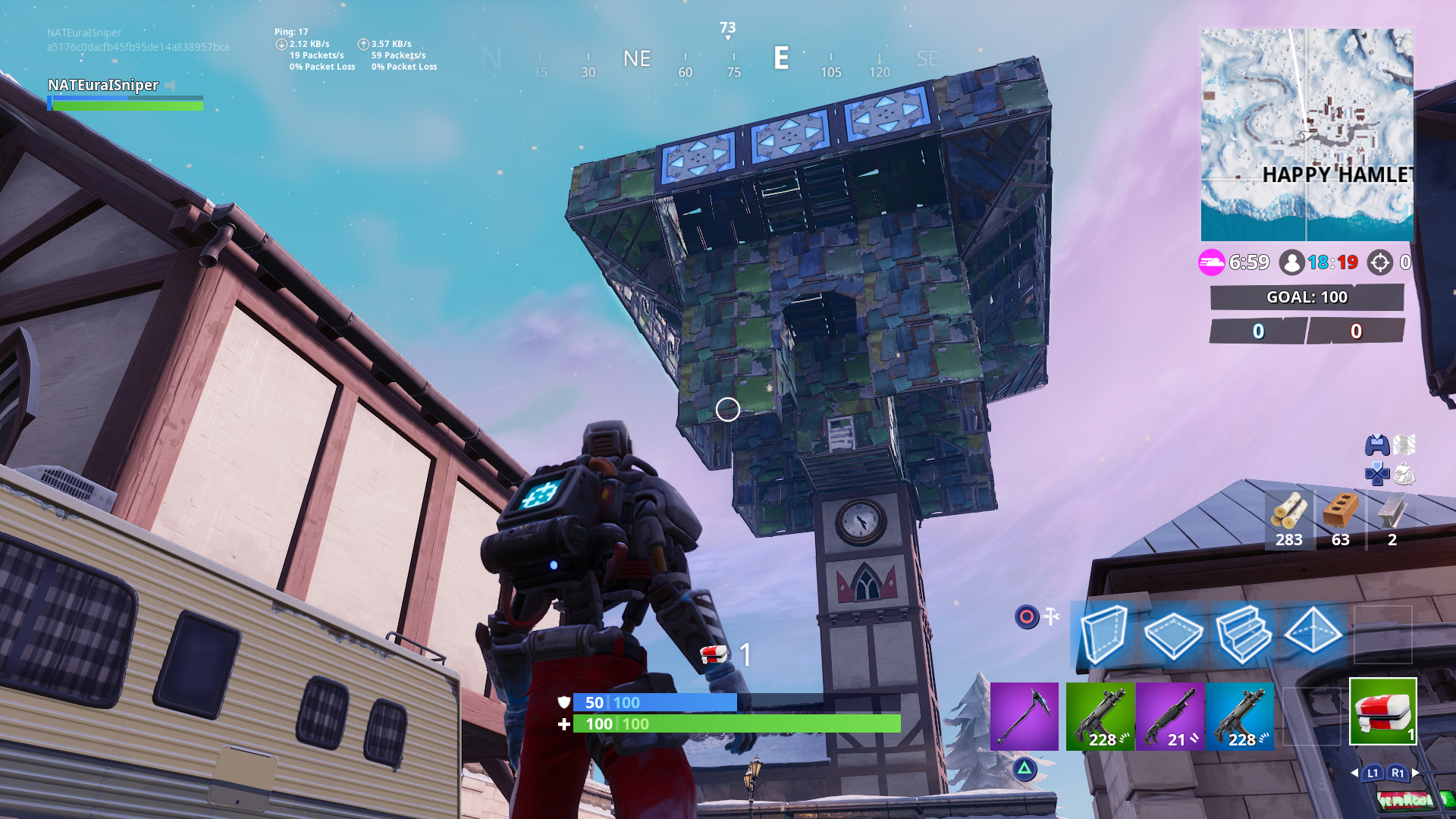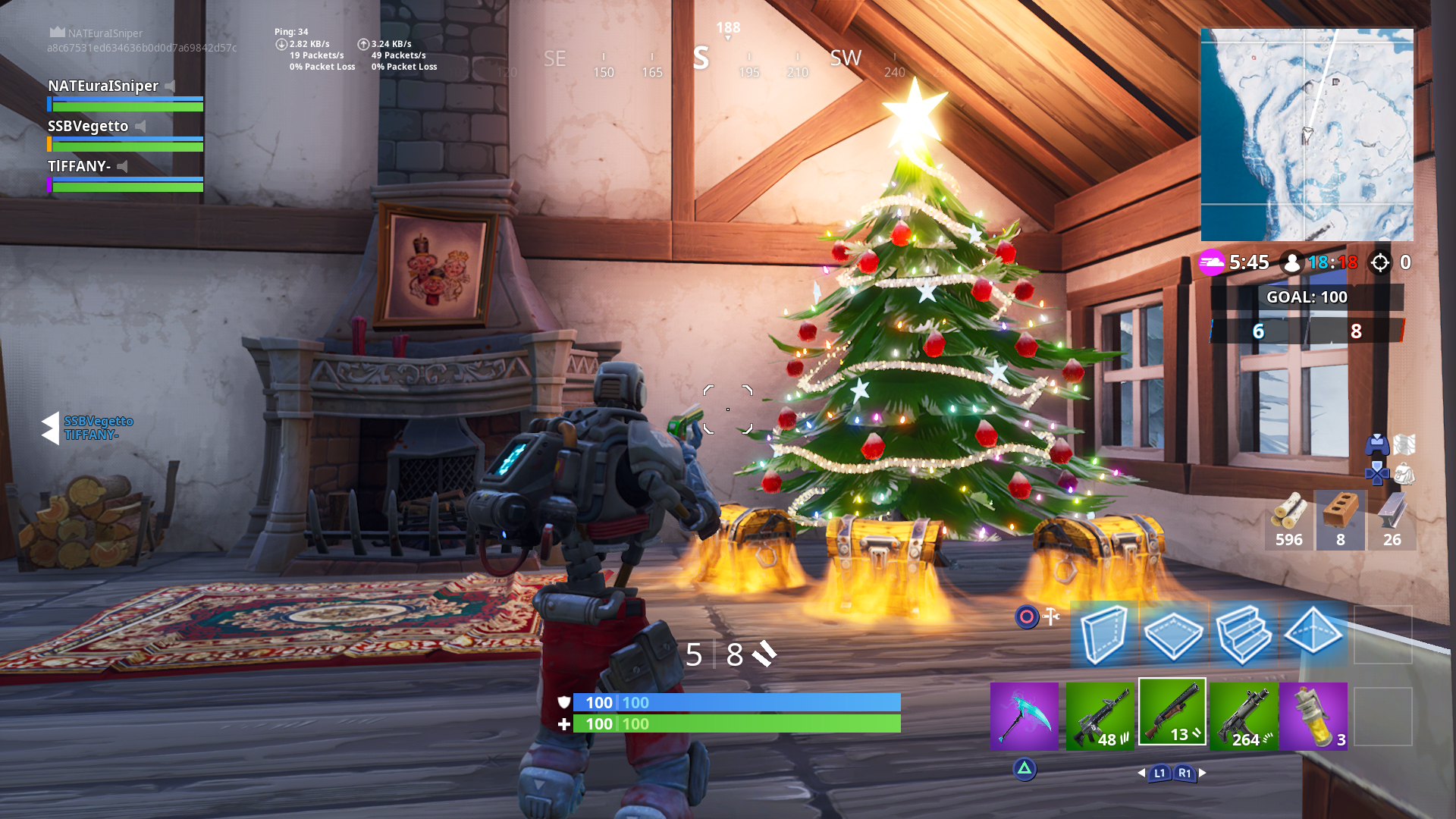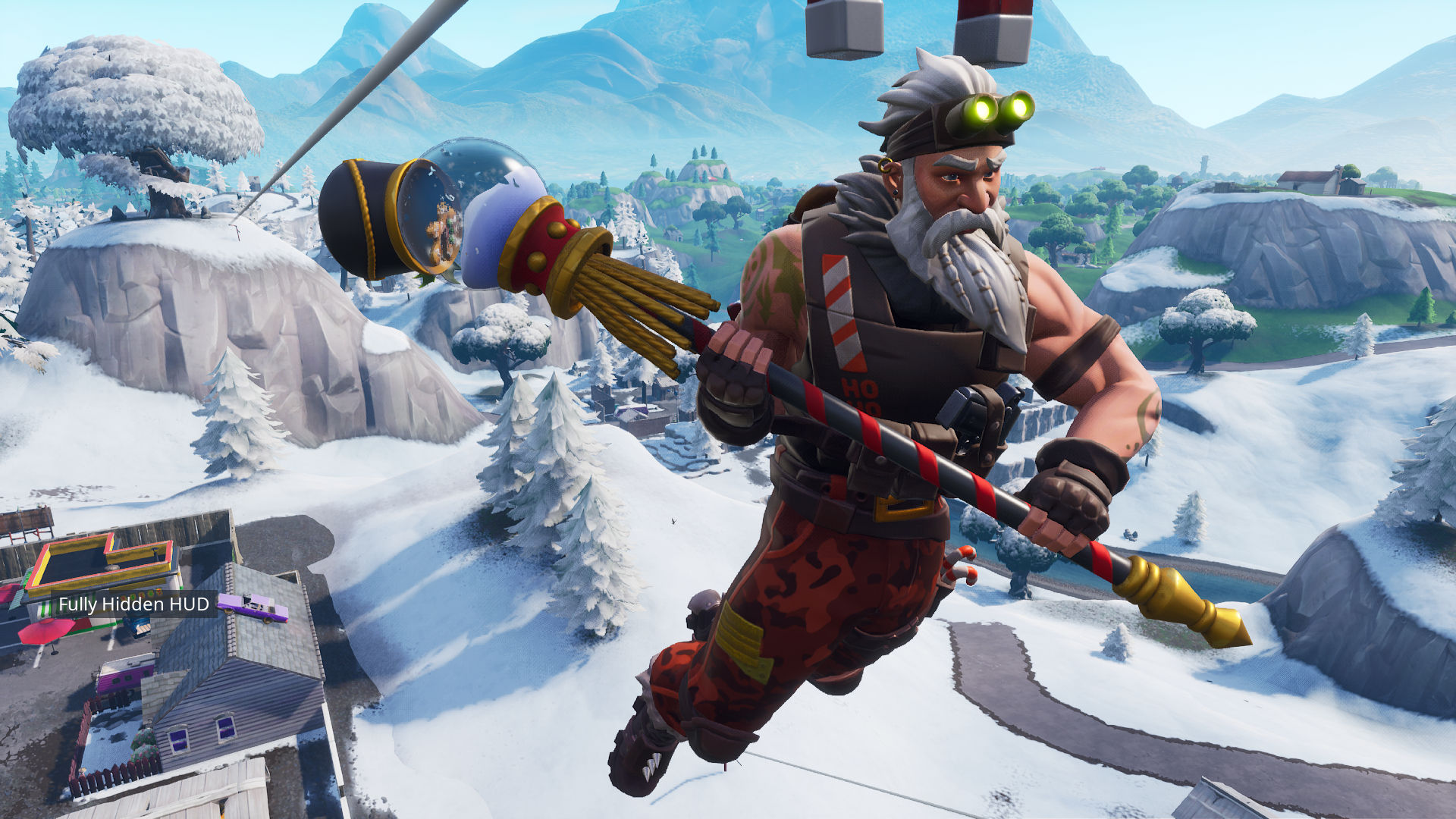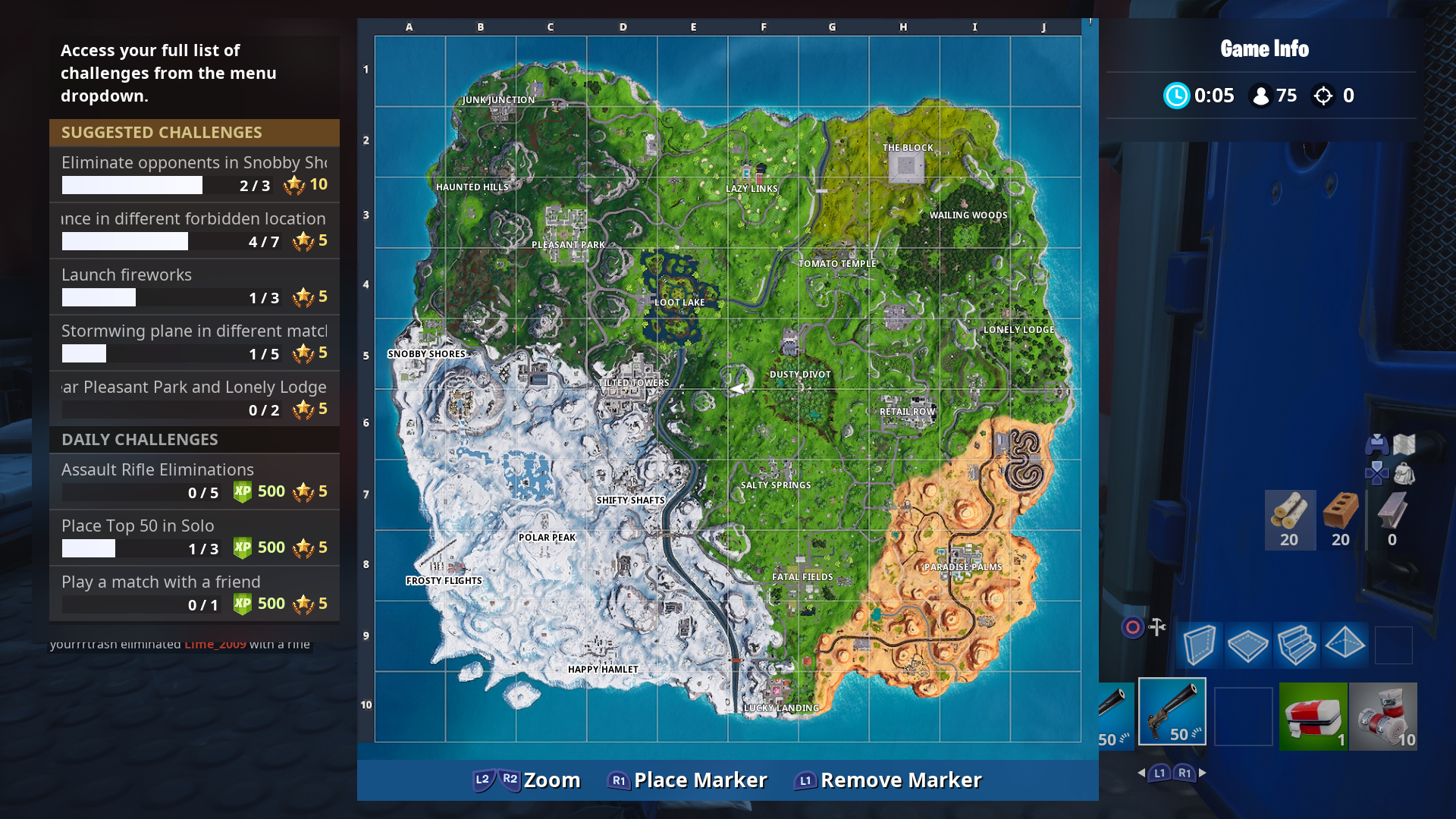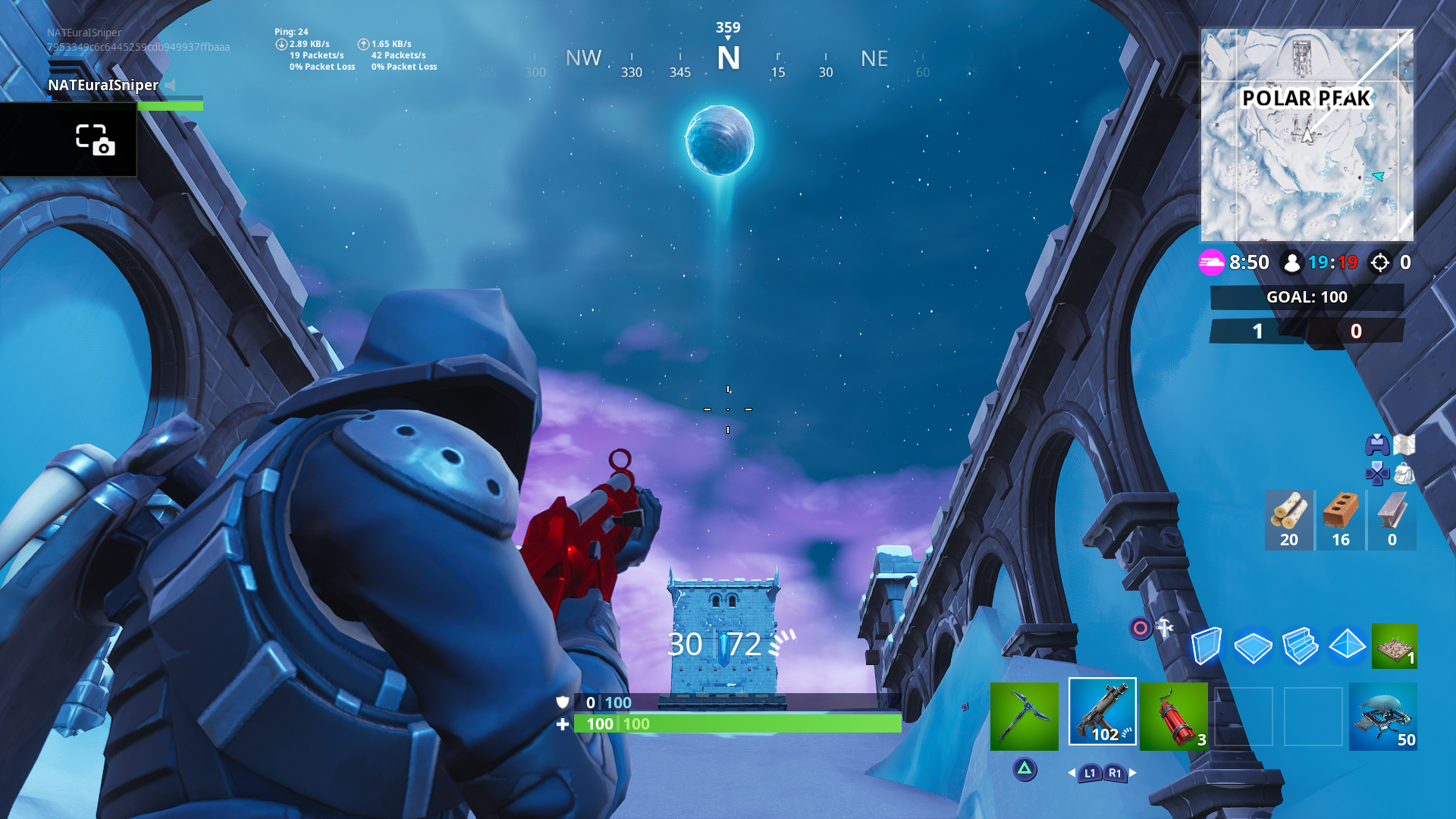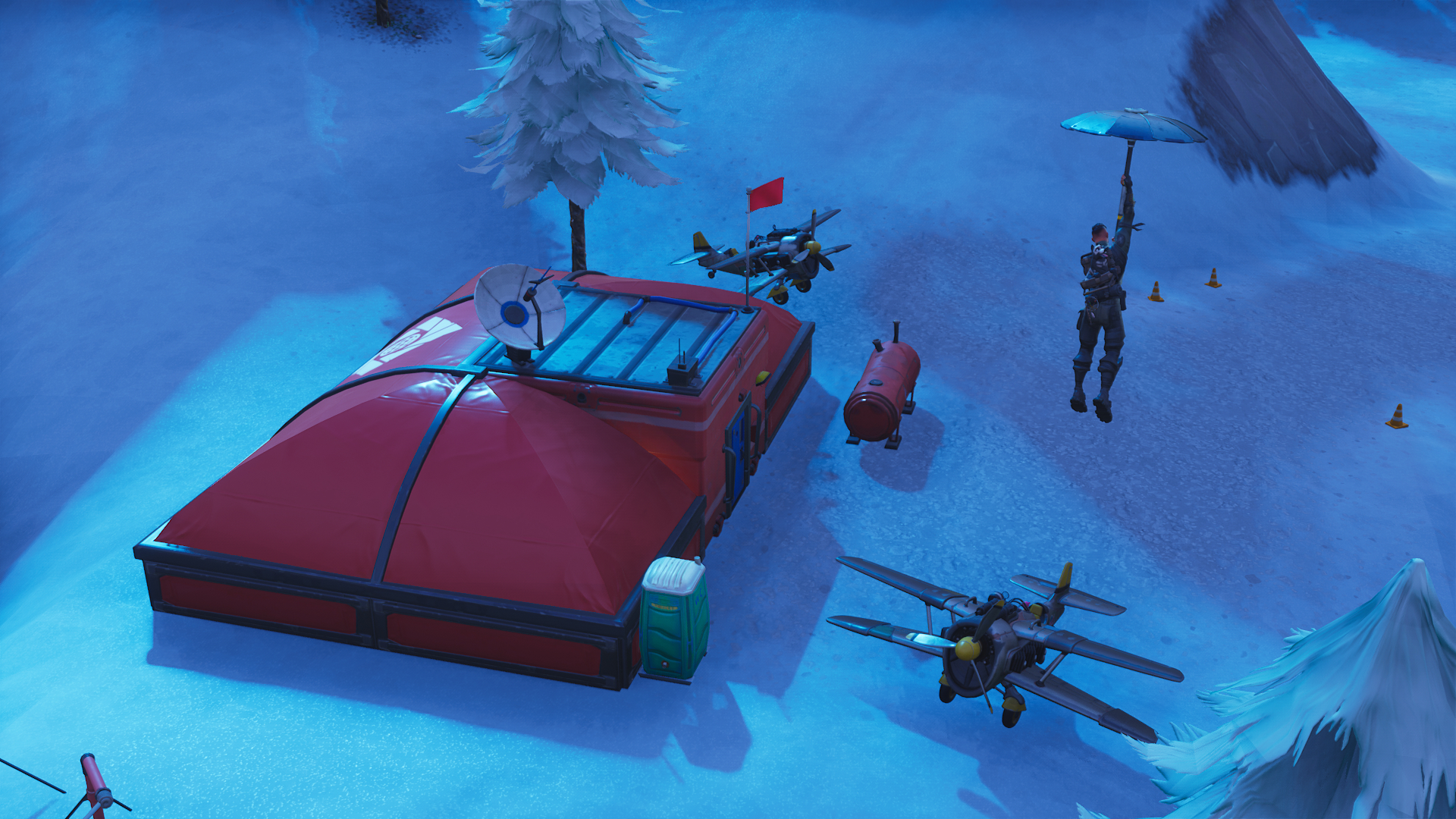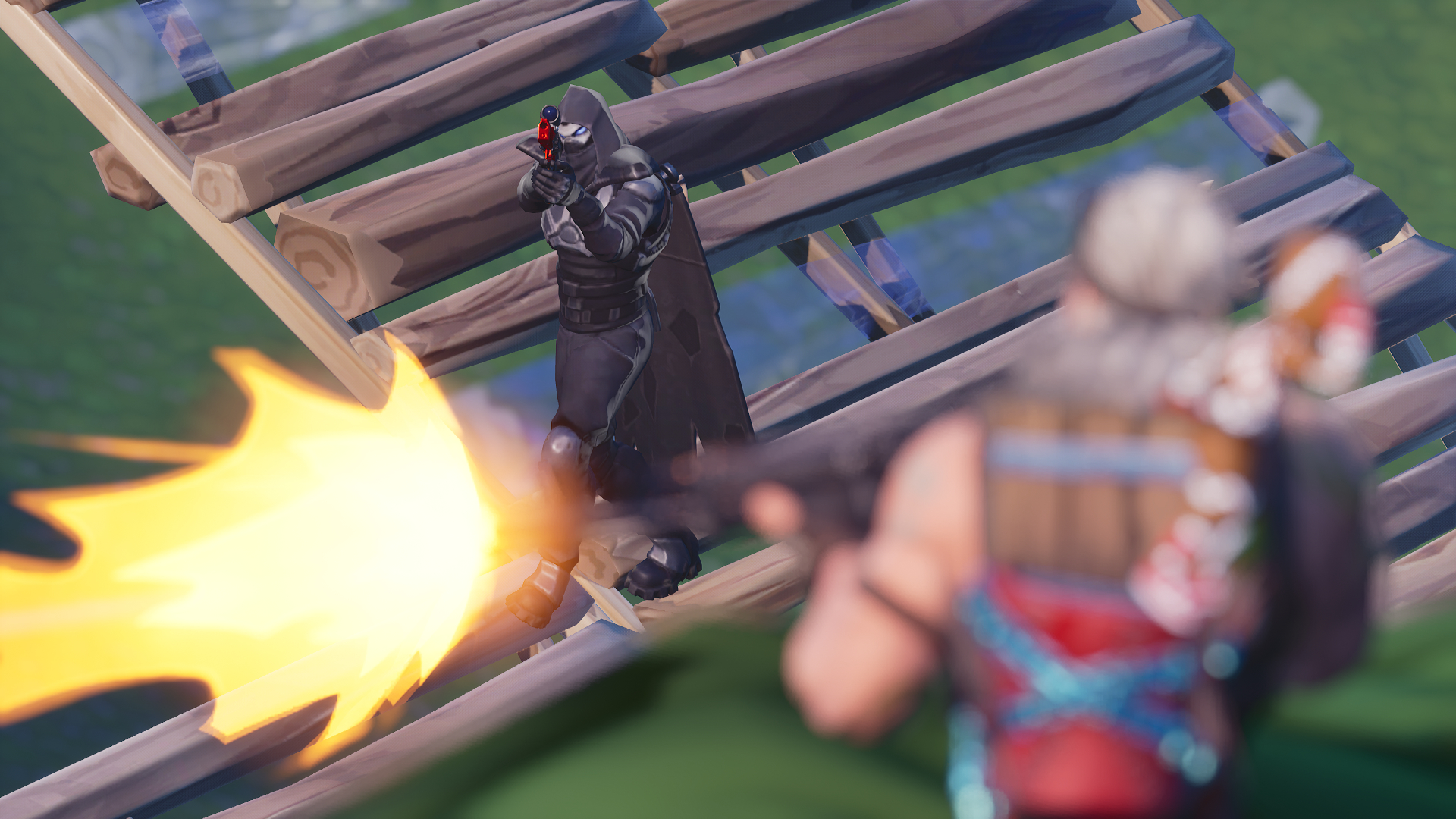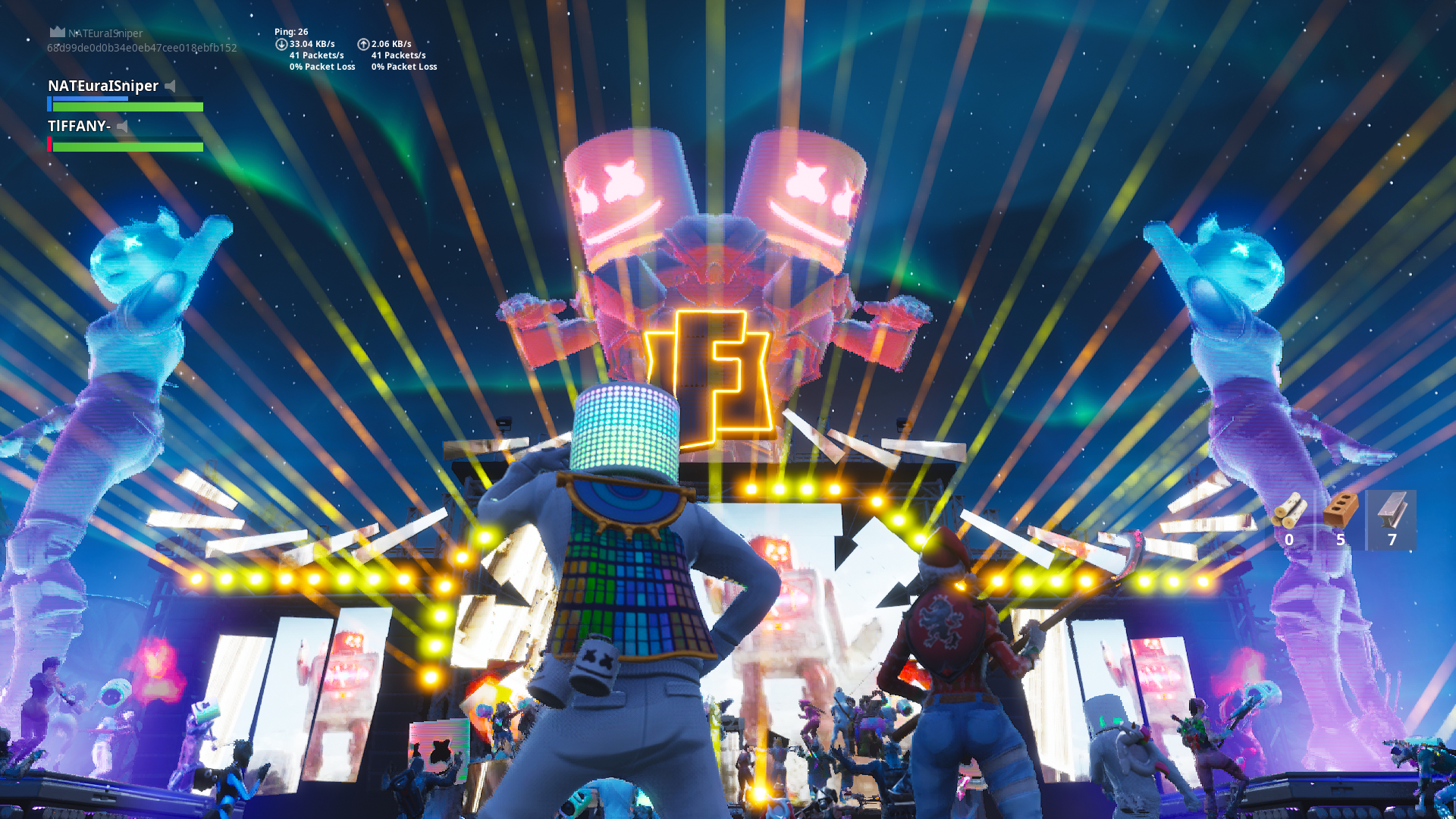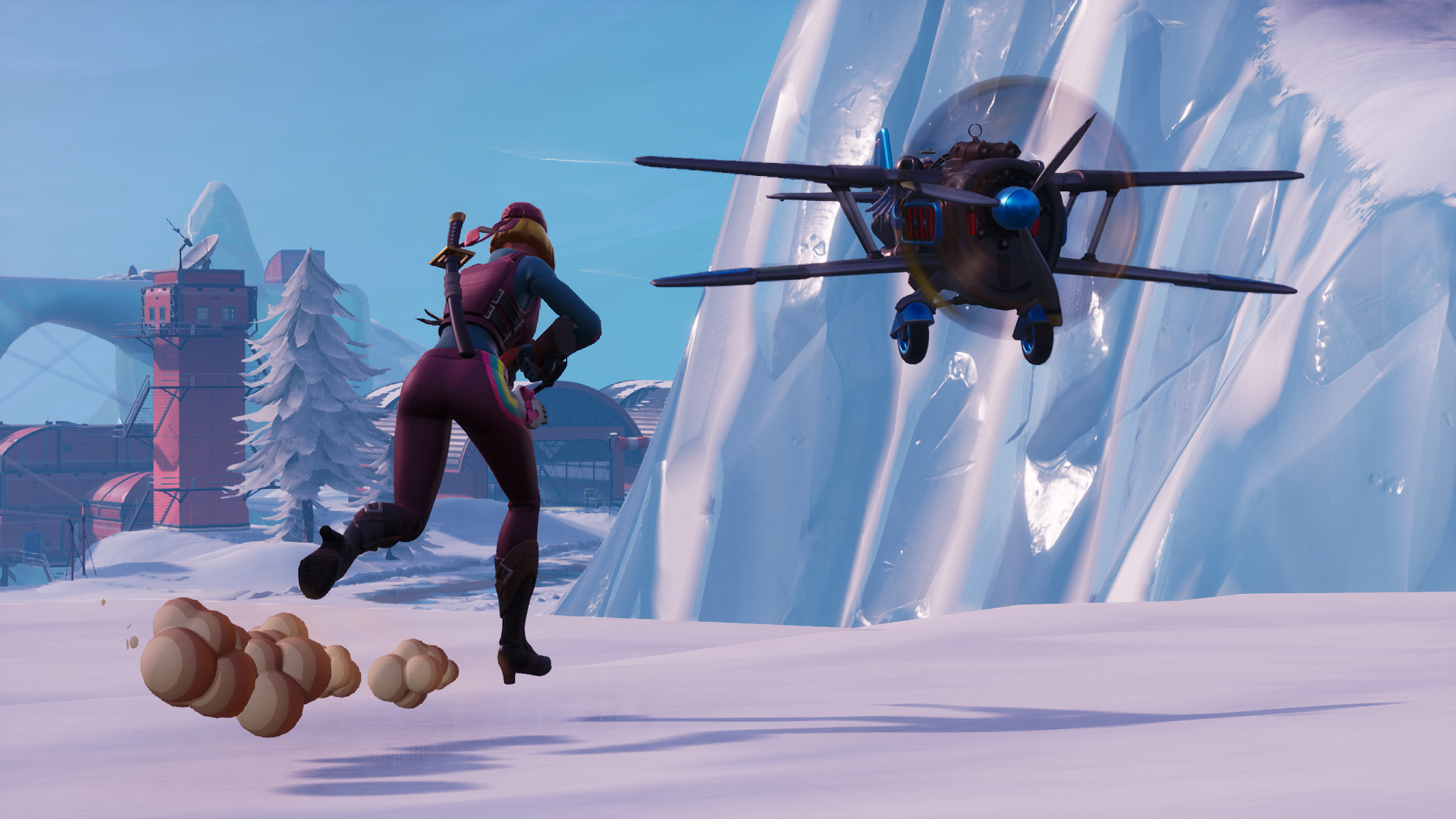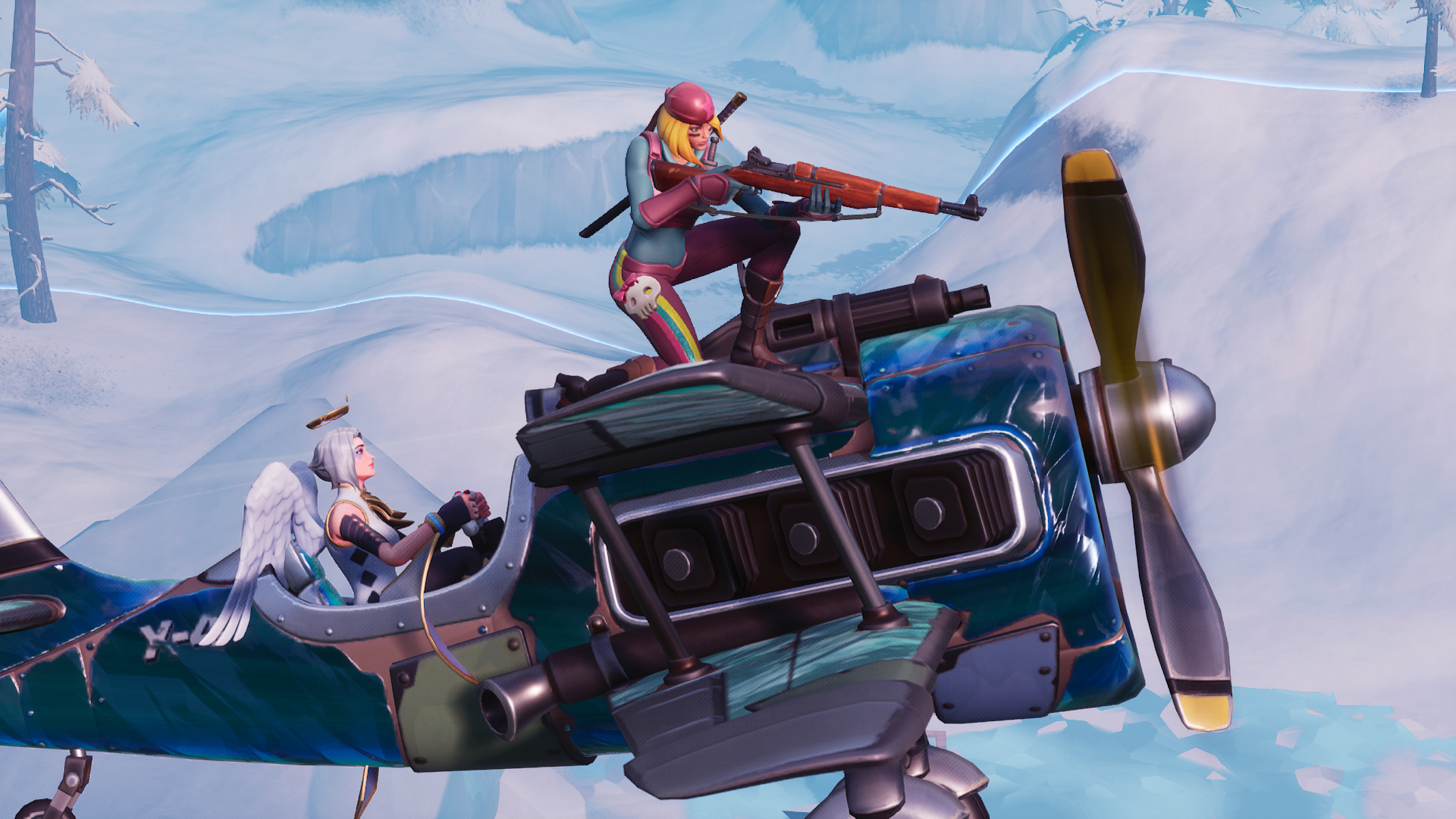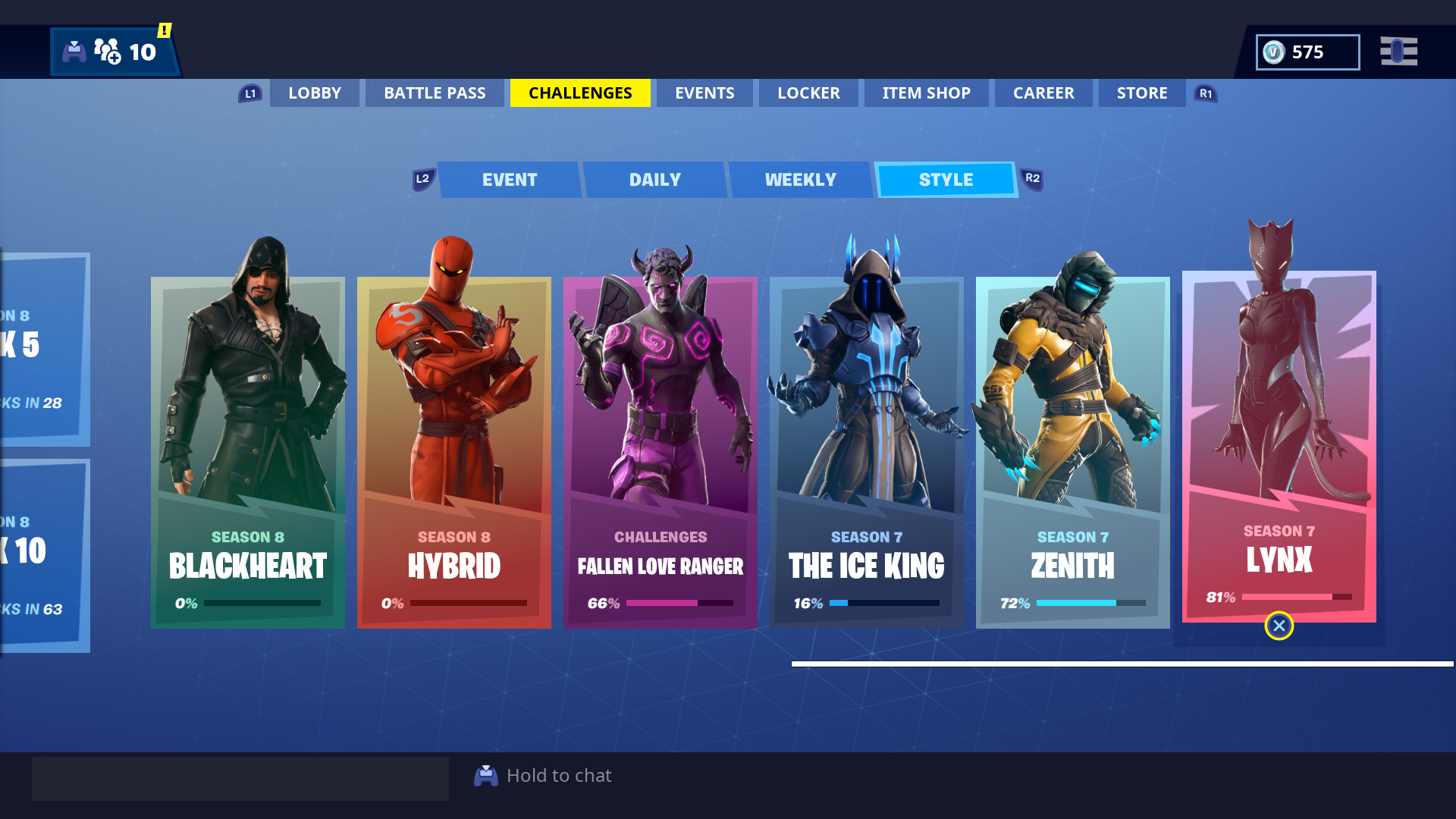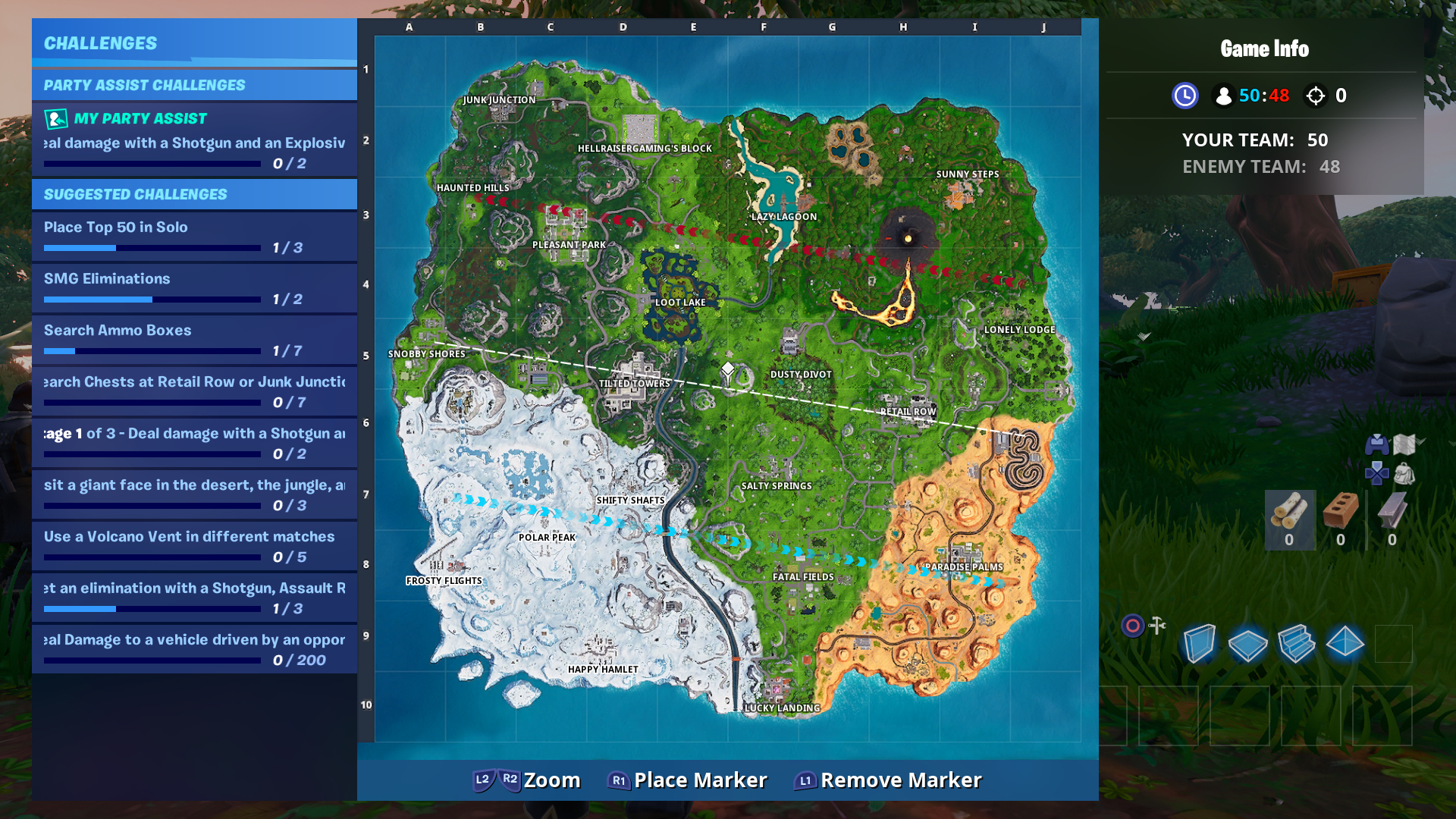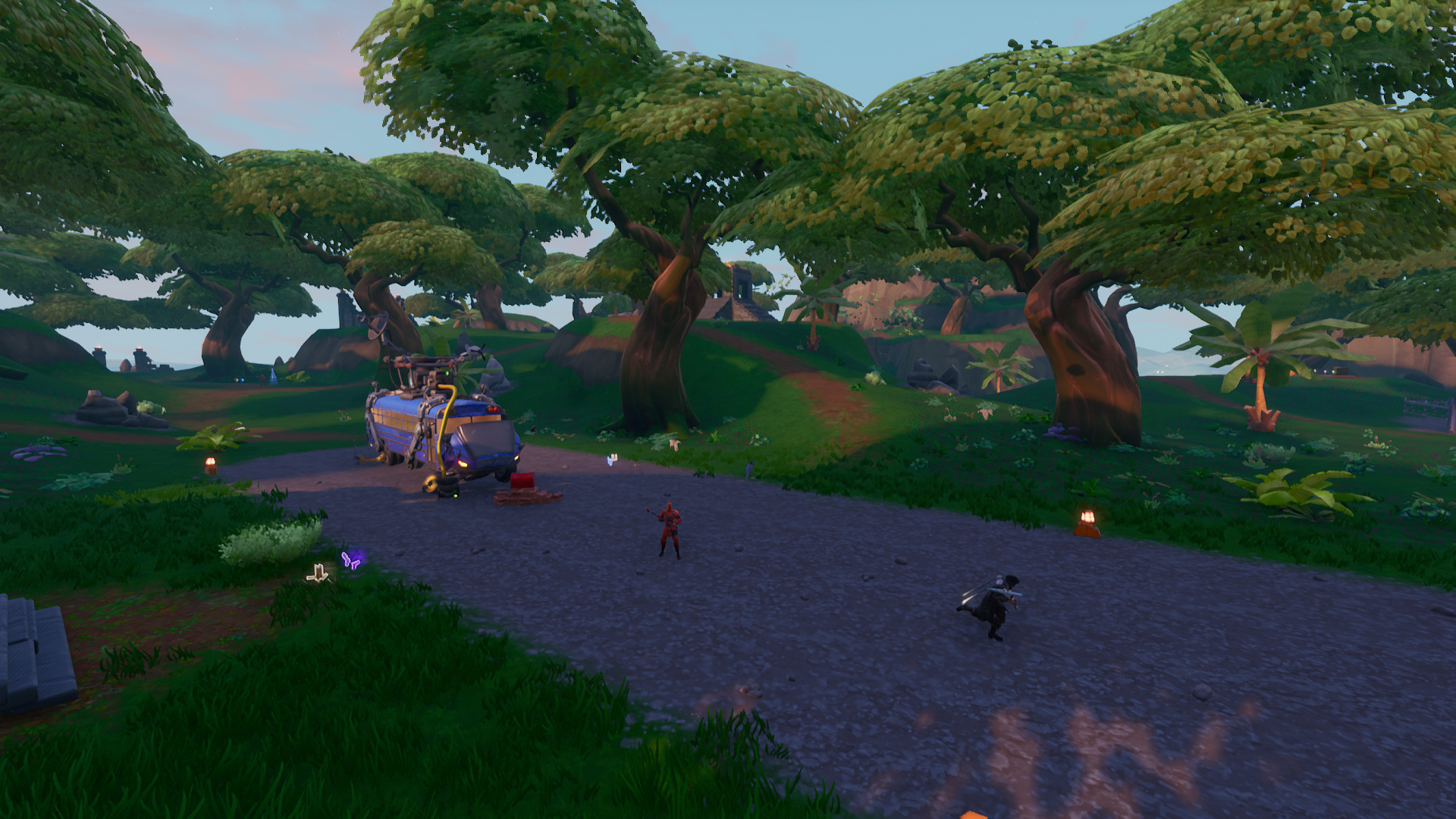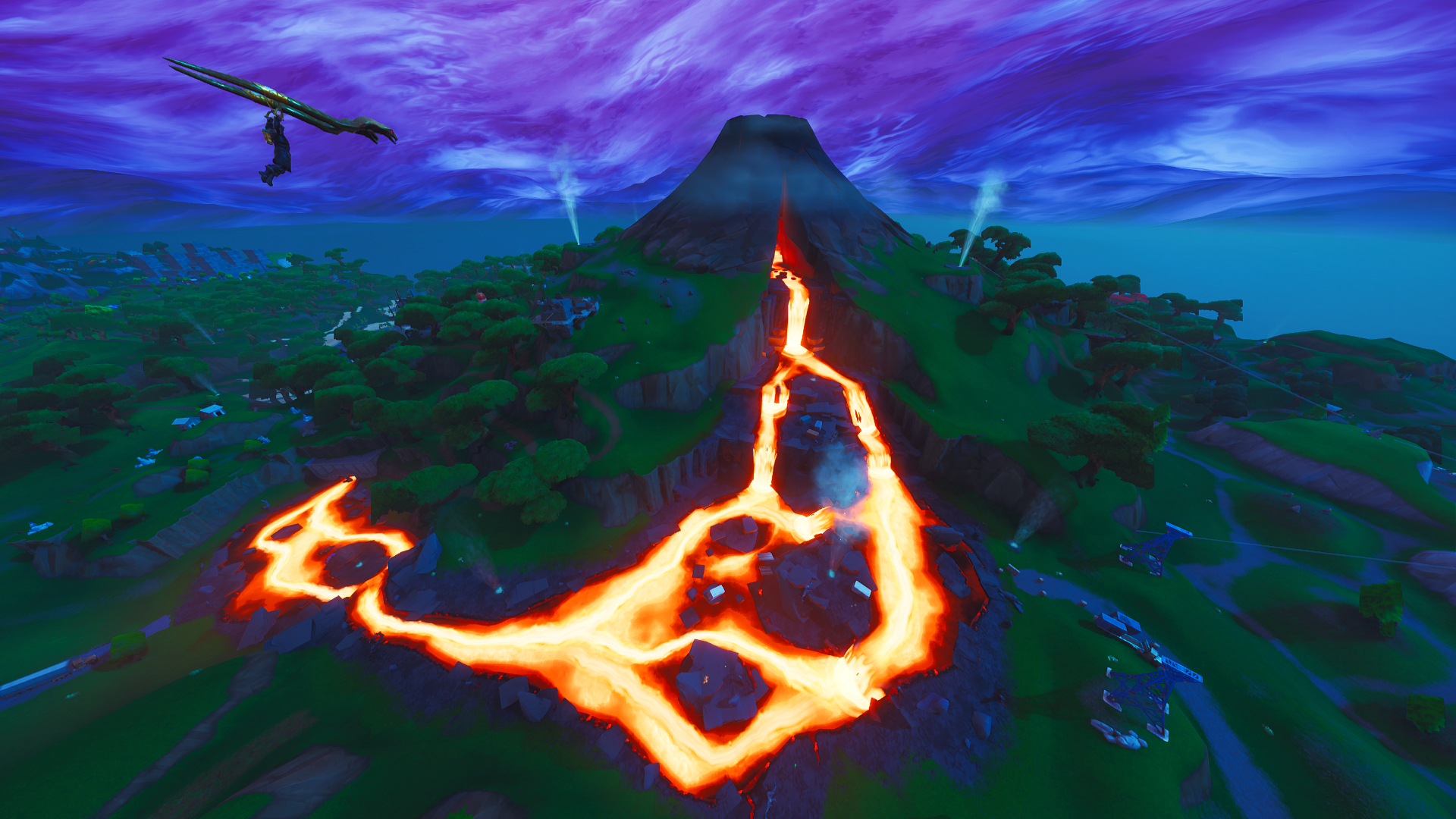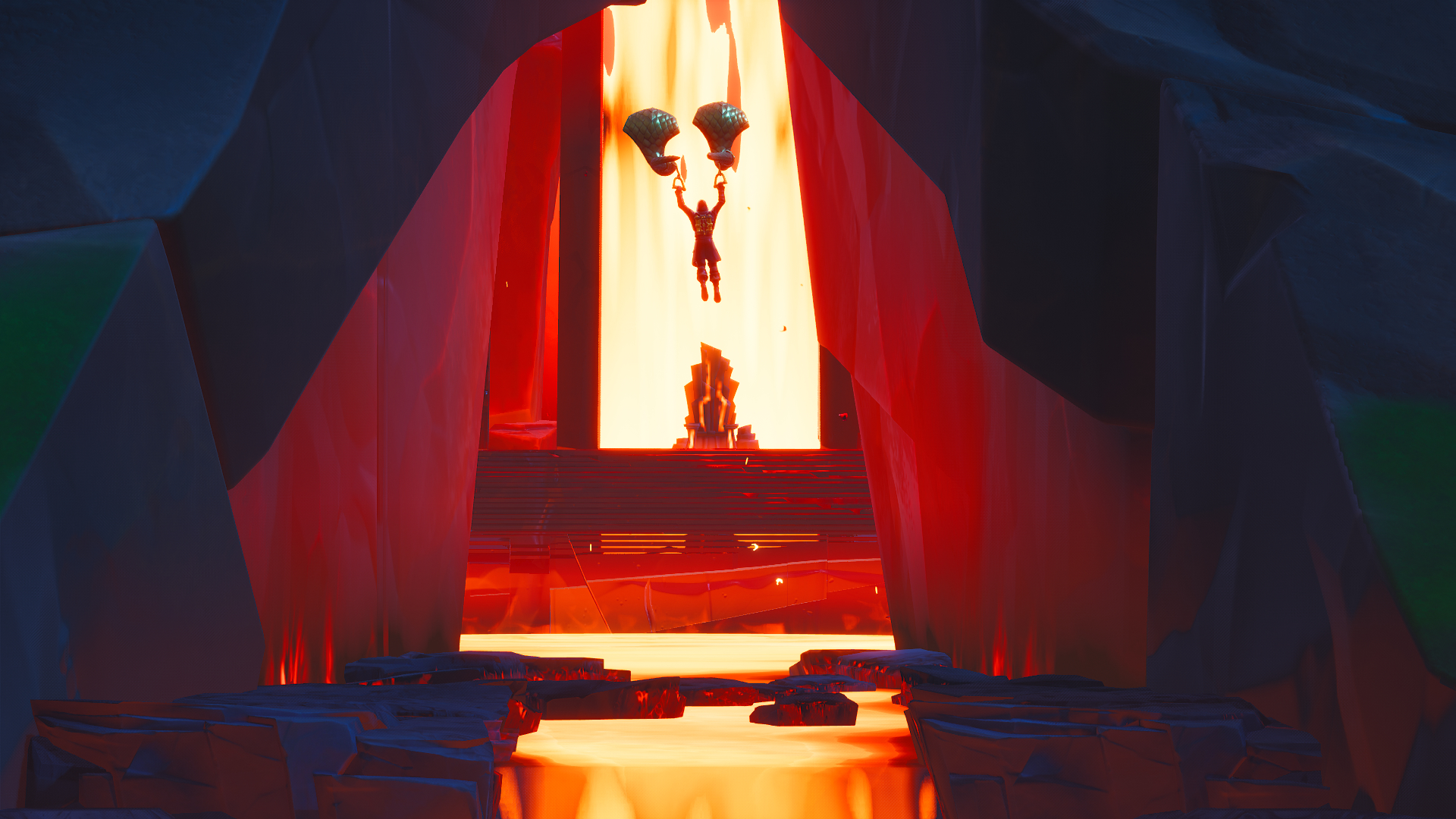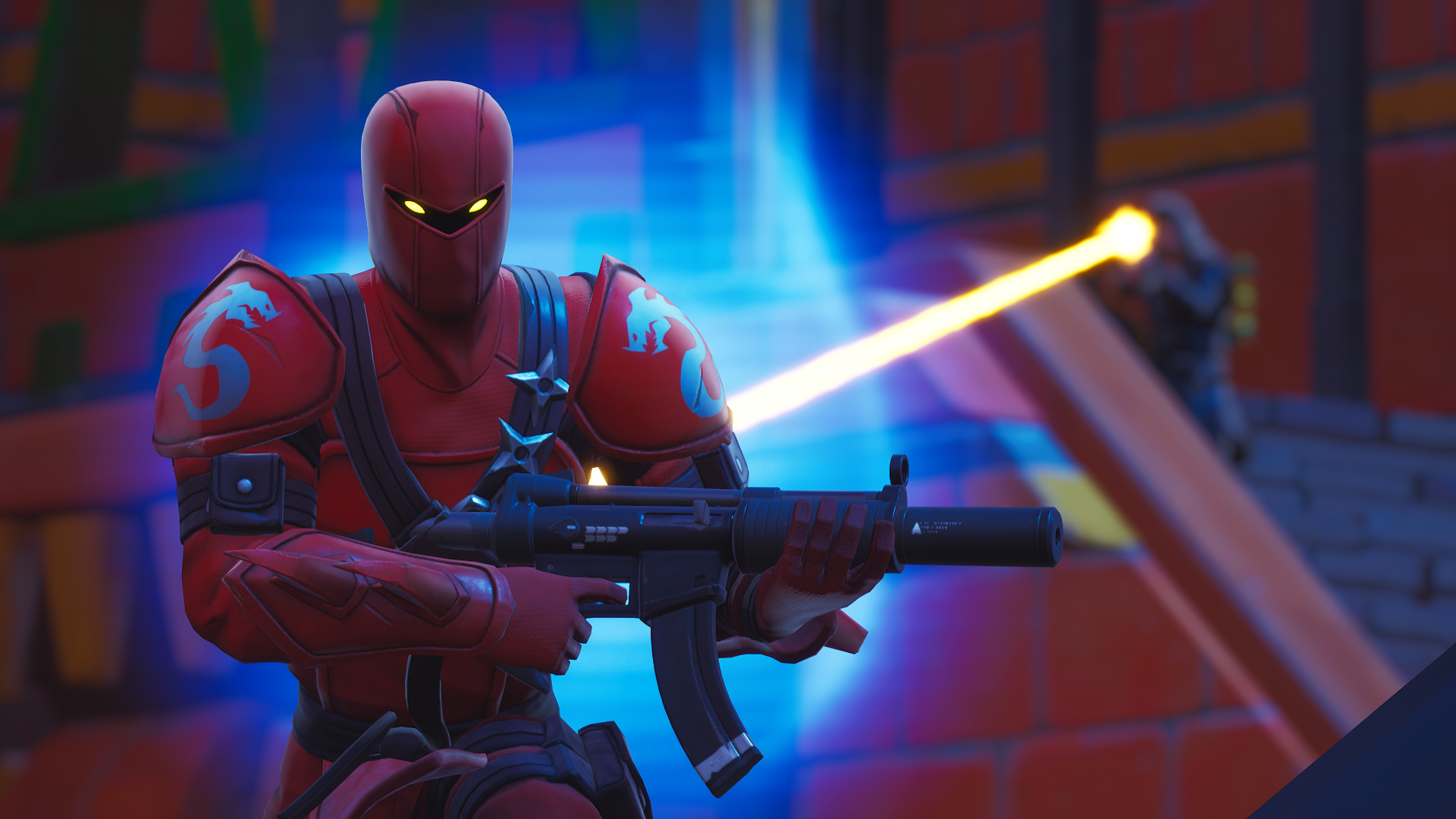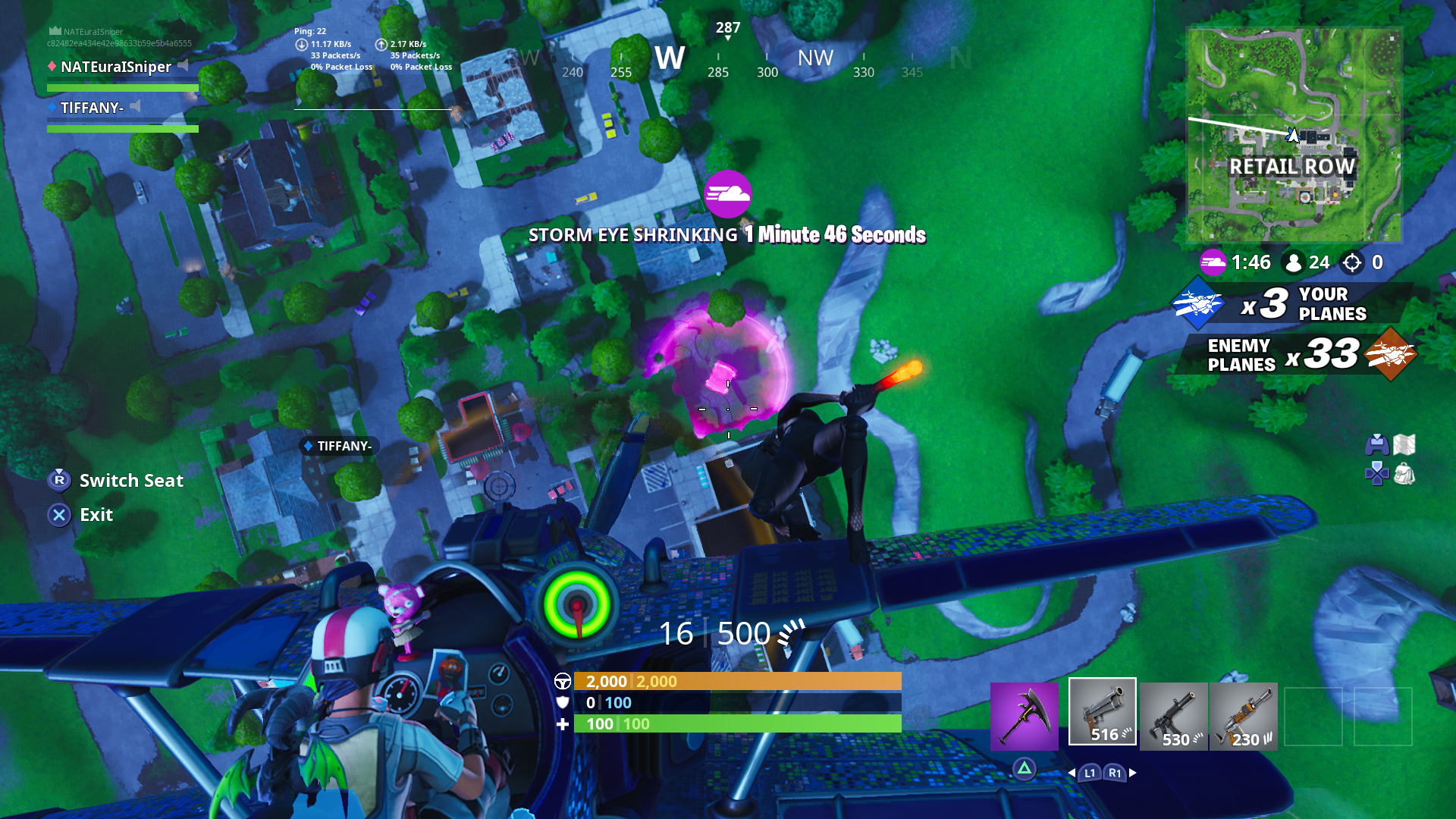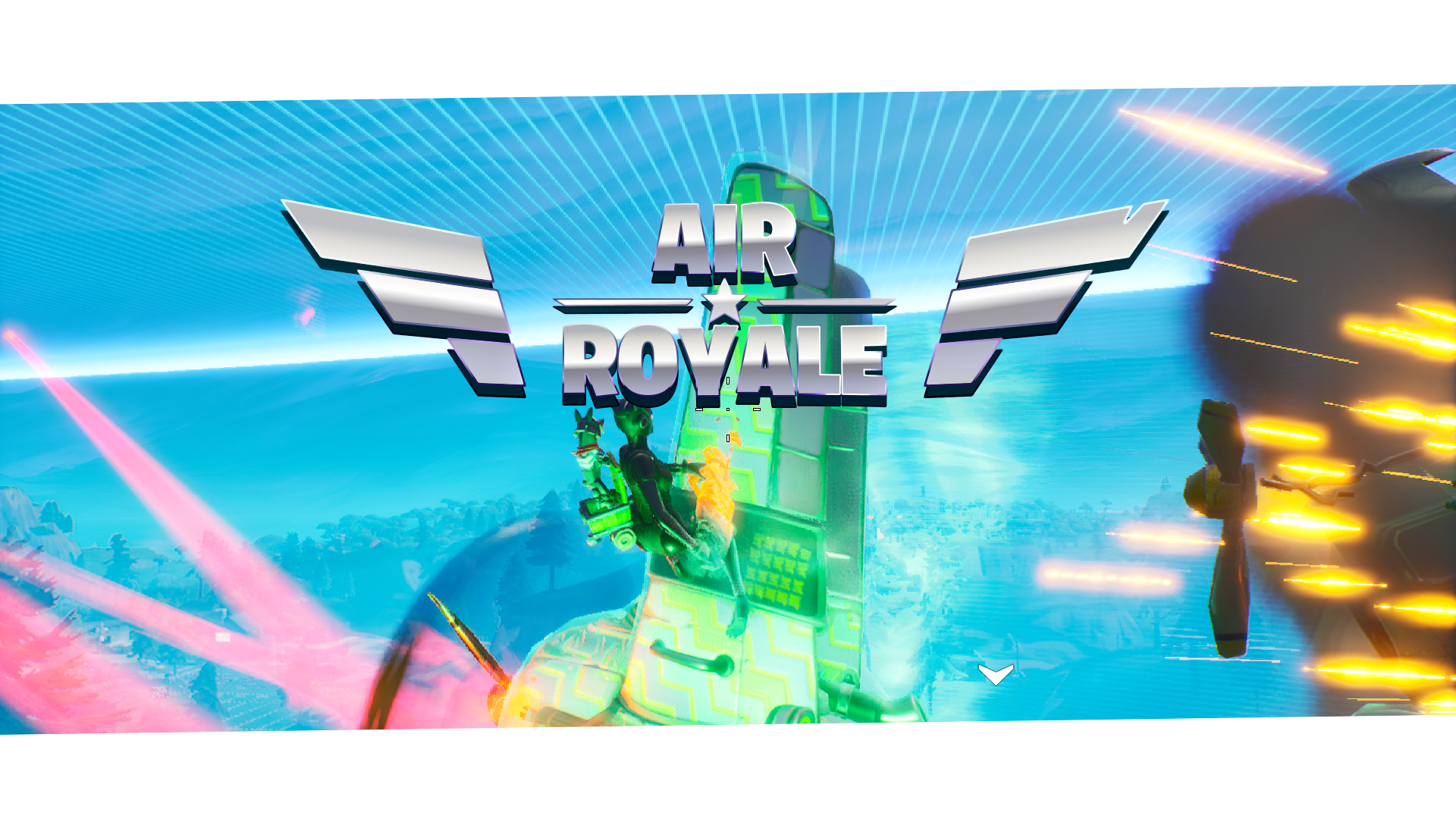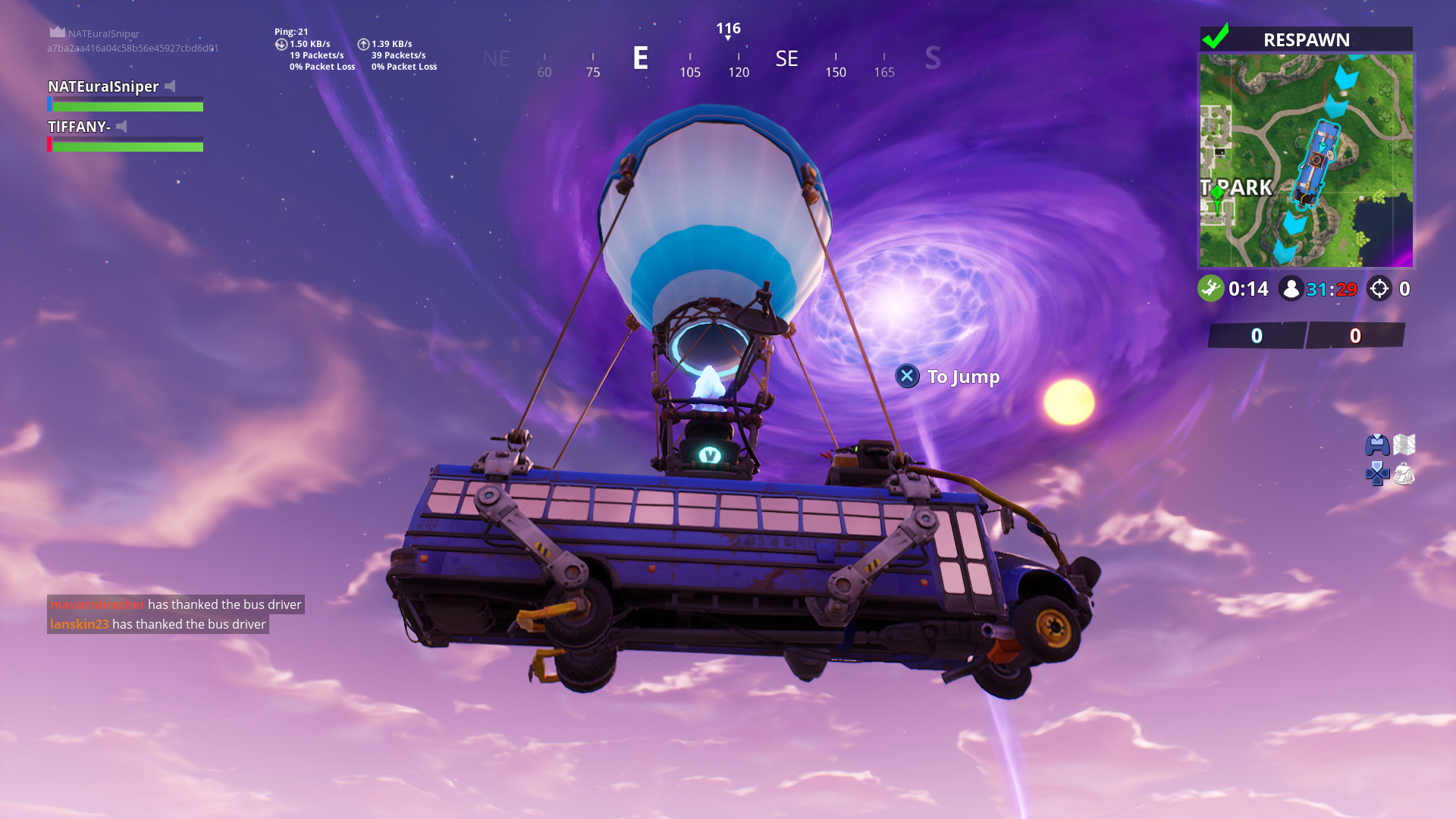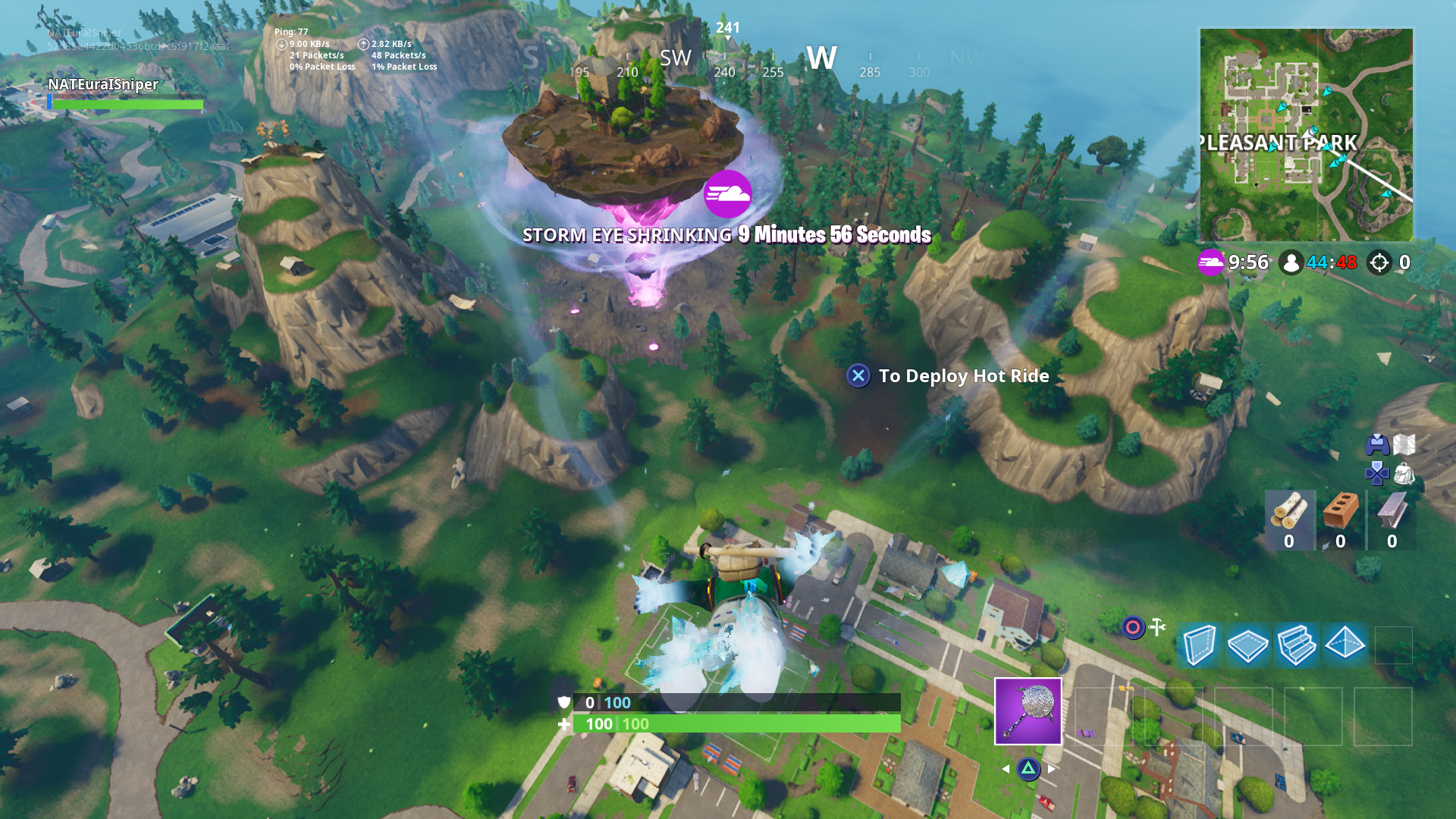“Fortnite is a good — but not great — battle royale shooter that gets its legs from impressive, consistent new features.”
- Innovative building mechanic
- Dynamic map
- Great variety of limited-time modes
- Seasonal rewards system
- Weak gunplay
- Constant updates hurt dev team
Last fall I attended a father/daughter dance. Midway through, there was a flossing dance competition. Every kid in the room knew the dance, and though flossing didn’t originate in Fortnite (Epic co-opted it, of course), they all knew it because of the ubiquitous battle royale game. It reminded me of how every kid in my elementary school seemed to have and trade Pokémon cards. And just like Pokémon cards, schools in my area have had to send out notices about the distraction power of Fortnite, banning it from schools.
Where Fortnite differs from a phenomenon like Pokémon is that it’s not solely seen as a hobby for kids. Fortnite has infiltrated the “coolest” of us, from music sensations like Drake to professional athletes. Boston Red Sox pitcher David Price has a well-known Fortnite obsession that some speculated contributed to his carpal tunnel injury. Players have enjoyed rounds of Fortnite on the jumbotron at ballparks. Current Cleveland Indians first baseman Carlos Santana smashed a TV last year while playing with the Phillies because he was fed up with his teammates’ Fortnite habits. The Toronto Blue Jays organization is taking steps to curb their players’ Fortnite time in season.
Fortnite is not so much a game at this point; it’s a cultural touchstone, a steadfast staple of society that doesn’t seem to be going anywhere, almost two years after its arrival. What originally started as a free-to-play offshoot of a disappointing zombie tower defense game has morphed into the premier example of live service experiences. Fortnite as it stands today is much different than it was at launch, and it’s even much different than it was few months ago.
With constant changes rolled out to the map, weapons, gameplay modes, and systems, Epic Games has managed to keep millions of players invested. That’s an impressive feat considering most games fall off the map weeks after launch. Games that receive months of interest are rare. Games that receive years of interest? Exceedingly rare, especially to the degree that Fortnite has captured the world’s attention.

The basics
Fortnite probably has no need for an introduction by now. Chances are you either play it yourself or know plenty of people who do. But here’s a quick breakdown: 100 users hop on the Battle Bus, parachute down to a sprawling, continuously shrinking map, and compete to be the last player or team standing.
Two main constants have remained in Fortnite since its launch: the regular game modes (solo, duos, and squad) and the emphasis on building structures on the fly, whether they be for traversal, safety, or gaining the upper hand.
Fortnite’s loop remains enjoyable because it’s an experience that can appeal to both casual players and hardcore gamers.
The building mechanic remains Fortnite’s most innovative feature, especially considering Epic regularly introduces features seen in other battle royales like PUBG and Apex Legends. After Apex Legends launched, Epic quickly introduced its own ping system for communication and respawn vans for reviving teammates. Both of these features work well in Fortnite, despite coming across as a shameless copy.
But the building is honestly incredibly novel, even now. The ability to quickly put together fortresses and towering skyscrapers from scavenged materials fundamentally changes the mid to end game.
That said, the building is also the biggest barrier to entry today. For a game this astronomically popular, Fortnite has a lot of controls to learn. Learning how to build during games, now that many competitors have been dedicated to Fortnite for more than a year, would seem to be an extreme challenge. If you have somehow avoided the Fortnite hype up until now, you’ll be at a severe disadvantage, more so than most other multiplayer shooters.
For as many updates as Fortnite receives, it’s surprising that the gunplay still feels so weak. The cartoonish aesthetic masks the genuinely mediocre shooting. Epic has yet to make Fortnite’s gunplay feel tight and fast, as it still lags behind PUBG and sits way, way behind Apex Legends.
Fortnite changes all the time, to the detriment of its development team, and to the joy of its fans.
Epic has improved the general performance for the most part, though. Animations are crisper, framerate drops are almost non-existent, and the cartoon environment feels richer and more detailed than ever before. There are still some annoyances, such as peculiar item pickup issues. Unlike other games, the prompt to grab a new weapon or item has a curiously small window. You can be standing on top of it and still not be able to pick it up. This, like other general gameplay grievances, is only a minor issue, though.
Fortnite’s loop remains enjoyable because it’s at once an experience that can appeal to both casual players and enthusiasts. From thanking the Battle Bus driver to dropping into your favorite locale to scavenging for loot and weapons, Fortnite’s early moments are often laid back. Then the shooting, building, and avoiding the encroaching storm ups the ante. The final frantic sequence with only a handful of players and teams remaining offers some of the best battle royale moments around — in large part due to the building mechanic.
Over the past year, Epic has added a few new permanent gameplay modes, including the recently introduced Arena, a quasi-ranked mode to truly test your skills. Playground and Creative mode, the former is a leisurely building sim basically while the latter lets you create maps and your own rulesets, have added another level to the Fortnite’s cool-place-to-hangout identity. These modes welcomely slow down the pace and let Fortnite’s defining feature shine.
Content farm
Fortnite changes all the time. Really, it often gets multiple updates per week. While some are small, others drastically change regions on the map, bring in new vehicles like the Baller and Driftboard, introduce new limited-time gameplay modes, and litter the map with new weapons such as the sweet Grappler. Permanence isn’t a key feature in Fortnite’s design, so these changes are almost always temporary. The tweaks alter the overall flow of matches to varying degrees. Sometimes they work, and other times they falter. In the grand scheme of things, the amalgamating identity of Fortnite has kept players on their toes.
From covering regions with sand, snow, and lava to bringing in new named areas and knocking down others, Fortnite’s map has gradually evolved throughout each season of play. As of season eight, lava came to Fortnite in both a section of the main map and across the entire map in the limited-time game mode the Floor is Lava. These changes serve as much as points of intrigue as genuine advancements in the dynamic, thoroughly interesting map.
Epic has managed to create a storyline of sorts that goes alongside the map changes. When it all started, the famous meteor could be seen in the sky. Weeks later it crashed into the Dusty Depot. From there, the community interest in Fortnite’s world building caught fire. Strange events like the Durr Burger statue relocation, Kevin the Cube, and bizarre butterfly rift that took players to a white void have successfully kept players hooked. If you’ve been around since the beginning, the changes are really neat to see over time.
Map changes have often coincided with new limited-time gameplay modes. Fortnite has seen more than 40 LTMs since launch, a staggering figure. The most recent, Air Royale, is a great representation of how these modes significantly alter the loop. Duos take to the sky in planes and must fight to the death in dogfights, with one teammate standing on the wings with regular weapons. Planes can be hijacked and unlike the regular battle royale format, your plane has three lives.
On a core level, though, Fortnite is a great battle royale shooter that garners much of its excitement from a “what’s next” content strategy.
Epic has also partnered with huge properties like Marvel and the NFL. The Marvel partnership brought Thanos (twice) and the awesome Infinity Gauntlet gameplay mode, while NFL jerseys for all teams and a 20v20 limited-time-mode appeared in recent months.
Everything that Epic changes in Fortnite nowadays is in the name of seasonal content. Fortnite’s seasons, now spanning eight, dole out cosmetic rewards like skins by completing daily, weekly, and seasonal challenges. With such a reliable stream of exciting new content, it’s hard not to see why players keep coming back en masse.

At the same time, it’s difficult to heap praise on Epic for its strategy with Fortnite, as it’s coming at the expense of their development team who, according to a recent Polygon report, are working under unethical and immoral conditions in the pursuit of blisteringly fast gameplay updates.
Yes, Fortnite is entertaining and has markedly improved since my original review awarding it a 6/10. I just wish Epic would find a way to be happy with a game that’s already the most popular in the world, rather than feeling the need to cater to folks who need IV drip content updates. Because of this insane release model, Fortnite goes through peaks and valleys, making it a hard game to review in the traditional sense. On a core level, though, it’s a great battle royale shooter that garners much of its excitement from a “what’s next” content strategy and frequent community engagement.
Microtransactions
The Battle Pass truly is a sly and effective way to get users to spend money on the free-to-play game. It costs about $10 for each season, which is reasonable considering the amount of cosmetic perks that are up for grabs over the course of ten weeks. You can certainly enjoy Fortnite without spending a dime, but the loop of completing challenges and getting rewards really does encourage you to spend here and there. Individual skins, purchased with V-Bucks, can get quite pricey, though. Look at the featured tab on the store and you’ll find items costing upwards of $20, an obscene amount of money to spend on a virtual outfit (especially since the game has massive appeal to kids).
Our Take
Fortnite has improbably retained its worldwide dominance for almost two years, in large part due to its constant content updates that significantly alter gameplay and introduce new challenges to work towards. Performance has improved steadily since launch, and despite some grievances with the weak gunplay, the building mechanic remains stellar. Fortnite gets updated a lot, to the detriment of its development team. It’d be interesting to see how it fared with a less frequent, more ethical update schedule. As of now, Fortnite is a fun, lighthearted take on battle royale that continues to intrigue millions of people around the world every day.
Is there a better alternative?
Apex Legends is a more fine-tuned battle royale experience, and PUBG is more serious in its delivery, but nothing offers the lighthearted, fun for all ages battle royale that Fortnite does.
How long will it last?
Fortnite will last as long as the loop hooks you. Many players have dropped hundreds and thousands of hours into Fortnite. It’s as much a daily hangout spot as a video game now.
Should you buy it?
Fortnite is free-to-play, so you should certainly try it on PC, Mac, PS4, Xbox One, Switch, or mobile. As for the seasonal Battle Passes, you should only buy them if you play Fortnite regularly.













